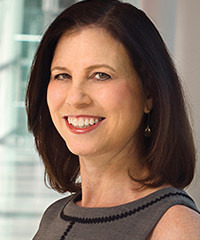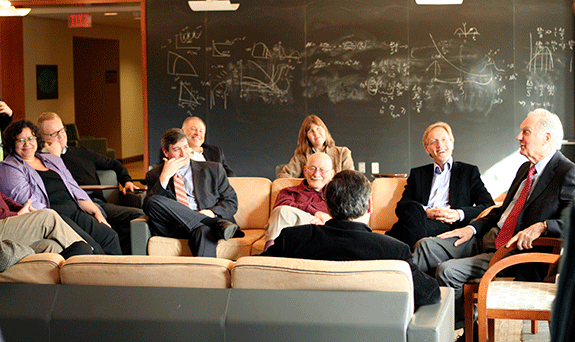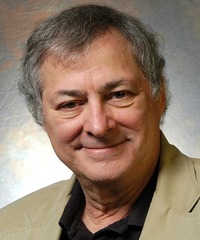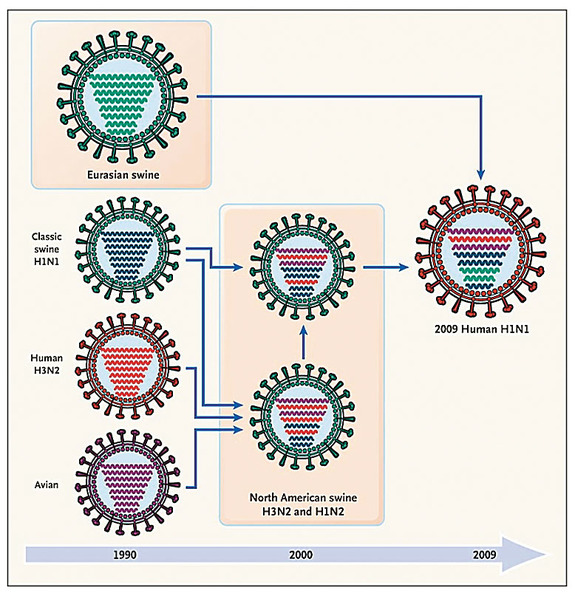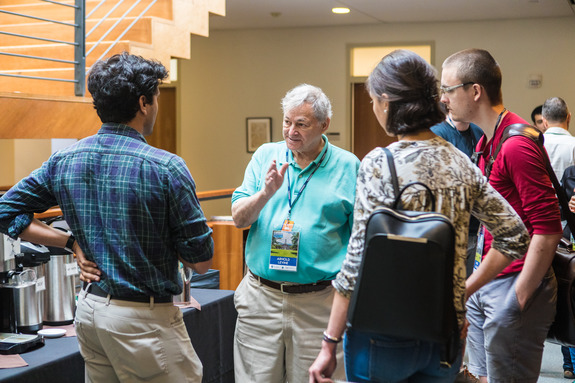The Institute Letter Spring 2020

The Institute Letter publishes firsthand accounts of research and questions posed by IAS scientists and scholars, reports on breakthroughs and fields of study, and shares news of the Institute community.
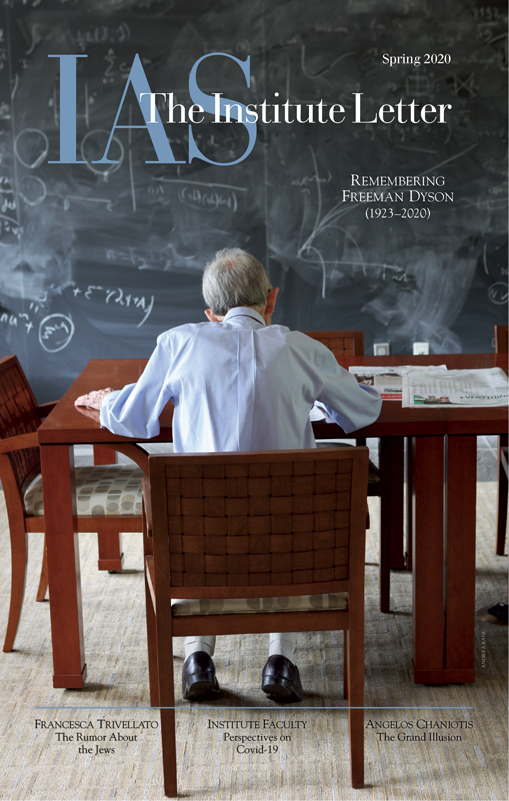
- A Message of Solidarity from the Director Against Anti-Black Violence and Racial Injustice
- In Memoriam: Freeman Dyson
- Enrico Bombieri Awarded 2020 Crafoord Prize in Mathematics
- Kairos: The Right Moment or Occasion
- The Rumor About the Jews
- The Dangerous Illusion that We Are All Equal Before the Pandemic
- IAS, Covid-19, Science and Society
- American Panofsky
- The Grand Illusion: Local Solutions for Global Problems
- Covid-19: What We Know and What’s Next
- A Launchpad to Discovery
- News of the Institute Community
- SRG X-Ray Observatory Surveys Half the Sky
- NEH Challenge Grant Awarded for HS–SS Library Structural Improvement Project
- Paper Sheds Light on Infant Universe and Origin of Matter
- Persian Heritage Foundation Grant to Study Zaydism in Iran
- NEH Grant for Squeeze Digitization Project
A Message of Solidarity from the Director Against Anti-Black Violence and Racial Injustice
Dear members of the IAS community,
Even as we all have been deeply affected by shutdowns due to the Covid-19 outbreak this spring, we also have been witnessing and experiencing profoundly disturbing incidents highlighting an interrelated and equally alarming crisis: ongoing, systematized, and institutionalized racism toward African Americans. As brothers, sisters, parents, and children, many of us cannot imagine the horror of losing an innocent loved one at the hands of those meant to protect our communities. With deep sympathy, our thoughts and prayers go out to the family of George Floyd, the most recent victim of such racial violence, who died at the hands of the Minneapolis police. Other recent, devastating incidents in which Black people have been stereotyped, targeted, and killed have included Ahmaud Arbery, simply jogging, and Breonna Taylor, asleep in her bed at home. We know this is but a small recitation of the ways in which racism affects people of color, and Black people in particular, every day. Divisive political responses from the top leadership are not helpful at a time when solidarity and grief should unite our nation. As with the common experience of Covid-19, this moment should be a reminder of the inextricable ties between us, even as disparities in our economies and health care systems mean that the pandemic has negatively impacted Black and brown people in disproportionately high numbers around the world.
On June 4, 1930, 90 years ago this week, the idealists who founded the Institute imagined a future that would be free from prejudice based on “race, creed, or sex.” While we may all feel despair over the lack of better progress made in our society in the intervening years, as an institution we must stand up for diversity, inclusion, and equity; for government and law enforcement accountability; and for social policies that prioritize equality and justice for everyone. It is critical that the scholarship at IAS focused on racial violence, including that of law enforcement, continues. We must follow the recent advice of John Lewis, Congressman from Georgia, who has put his life on the line time and time again for civil rights, indeed dedicating his entire life to this cause. Congressman Lewis writes, “This is a special moment in our history. Just as people of all faiths and no faiths, and all backgrounds, creeds, and colors banded together decades ago to fight for equality and justice … we must do so again.” At IAS, we all must stand together against racism—in the U.S. and in all parts of the world—and, in our work, strive to be leaders in understanding and dismantling the ways that discrimination and injustice are perpetuated.
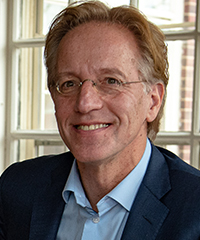
Robbert Dijkgraaf
Director and
Leon Levy Professor
Institute for Advanced Study
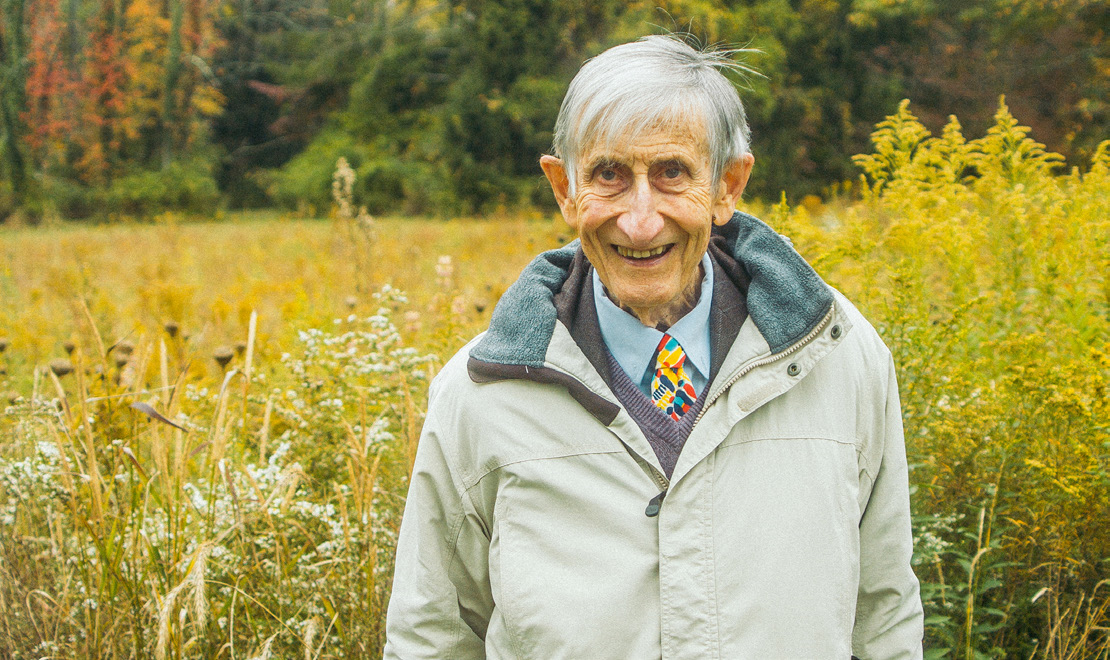
In Memoriam: Freeman Dyson
Remembering the physicist who dreamed among the stars
Freeman J. Dyson, theoretical physicist and writer, who embraced the stunning diversity of the universe with unique spirit, died on February 28, 2020, in a hospital near Princeton, N.J., at the age of 96.
Dyson generated revolutionary scientific insights, including calculations bridging the quantum and human worlds. His contributions stem from his work in numerous areas, including nuclear engineering, solid-state physics, ferromagnetism, astrophysics, biology, and applied mathematics.
“No life is more entangled with the Institute and impossible to capture—architect of modern particle physics, free-range mathematician, advocate of space travel, astrobiology and disarmament, futurist, eternal graduate student, rebel to many preconceived ideas including his own, thoughtful essayist, all the time a wise observer of the human scene,” stated Robbert Dijkgraaf, IAS Director and Leon Levy Professor. “His secret was simply saying ‘yes’ to everything in life, till the very end. We are blessed and honored that Freeman, Imme, and their family made the Institute their home. It will be so forever.”
“Freeman Dyson made fundamental contributions in an incredibly wide variety of fields in physics and mathematics,” stated Edward Witten, Charles Simonyi Professor in the School of Natural Sciences. “His contributions were so wide-ranging that it is virtually impossible for any one person to summarize them adequately. Quantum electrodynamics, quantum statistical mechanics, Diophantine approximation of numbers, and random matrix ensembles are just a few of the fields to which Freeman contributed at the highest level. But really, he left his mark almost everywhere.”
In 1941, as an undergraduate at Trinity College in Cambridge, Dyson studied physics with Paul Dirac and Arthur Eddington and found an intellectual role model in the famed English mathematician G. H. Hardy, who had previously mentored the mathematical prodigy, Srinivasa Ramanujan. As a mathematician, Dyson published papers on number theory, analysis, and algebraic topology, developing the concept known as “Dyson’s transform” as part of his proof of Mann’s theorem, which serves as a fundamental technique in additive number theory.
“Freeman Dyson was truly a ‘free thinker’—there were absolutely no bounds to what he was willing to imagine, no bounds of complexity, of conventional wisdom, of scope and time,” stated Charles Simonyi, IAS Board Chair. “His thoughts, just as the universe he was exploring, and expressed in the title of one of his many books, were truly ‘Infinite in All Directions.’”
“A mathematician, physicist, writer, and explorer, who was never afraid to speak his mind, Freeman embodied the values of IAS and more importantly represented the principles that all great scientists aspire to uphold,” stated Jim Simons, IAS Trustee Emeritus and former Member in the School of Mathematics. “Freeman was a marvelous role model, bringing out the best in all those around him. He will be deeply missed.”
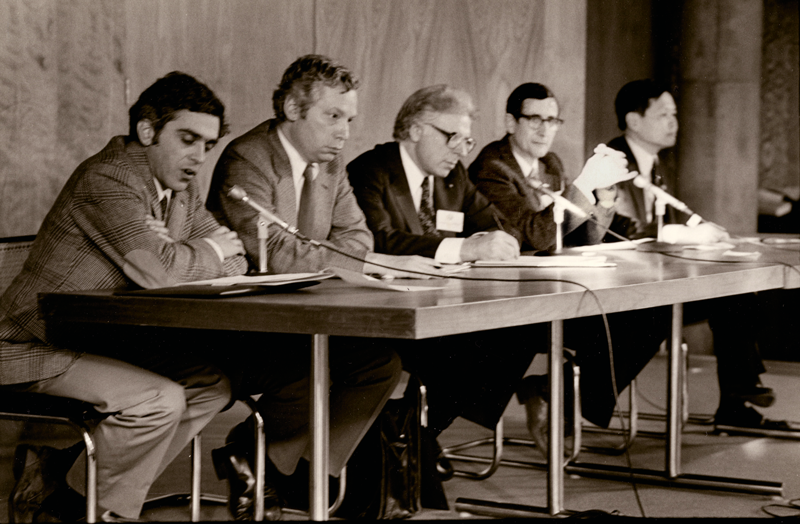
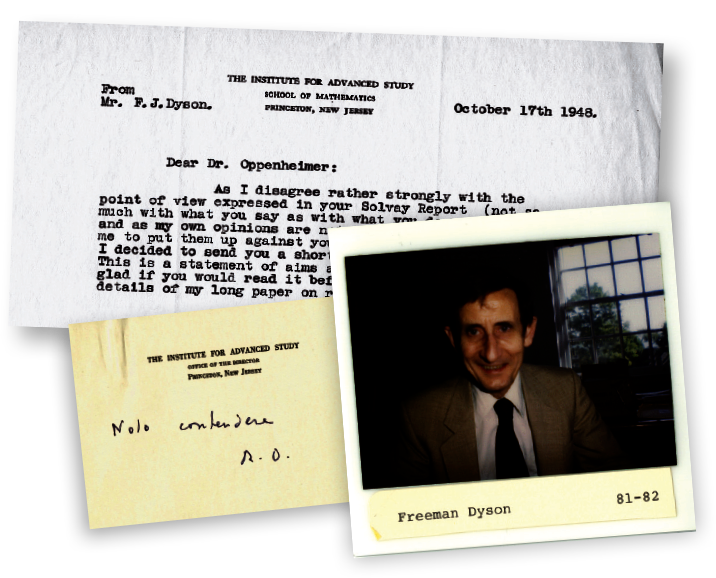
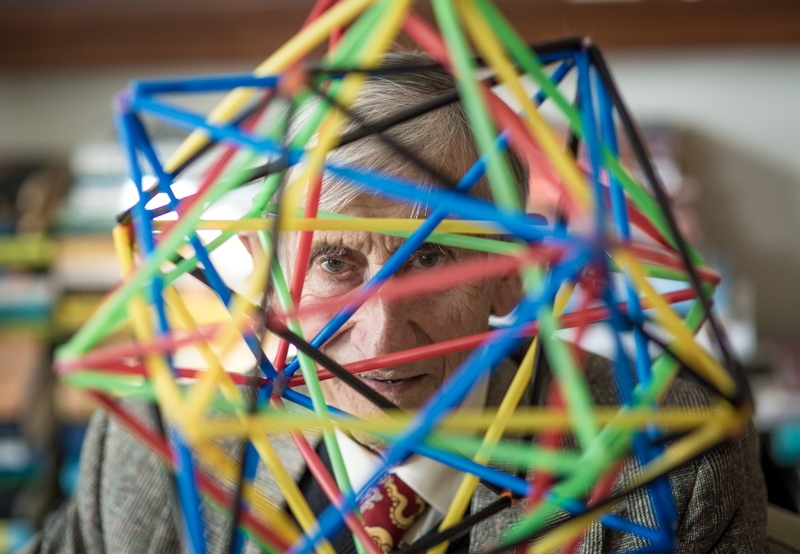
During the Second World War, Dyson worked for two years as a civilian scientist conducting operations research for the Royal Airforce’s Bomber Command. He then enrolled at Cambridge University and graduated with a B.A. in Mathematics in 1945. Dyson was awarded a Commonwealth Fellowship in 1947, bringing him to Cornell University, where he continued to focus his mathematical acumen on theoretical physics, pursuing his graduate work with Hans Bethe and Richard Feynman.
In the spring of 1948, Dyson accompanied Feynman on a fabled cross-country road trip that culminated in one of the most remarkable breakthroughs of twentieth-century physics. After being steeped in the work of Feynman for months and spending six weeks listening to Julian Schwinger’s ideas in Ann Arbor, Dyson was able to prove the equivalency of their two competing theories of quantum electrodynamics (QED), which describes how light and matter interact. Dyson recalled the moment of discovery as a “flash of illumination on the Greyhound bus.” He had been traveling alone for more than forty-eight hours, making his way to Princeton, N.J., to begin his first Membership at IAS.
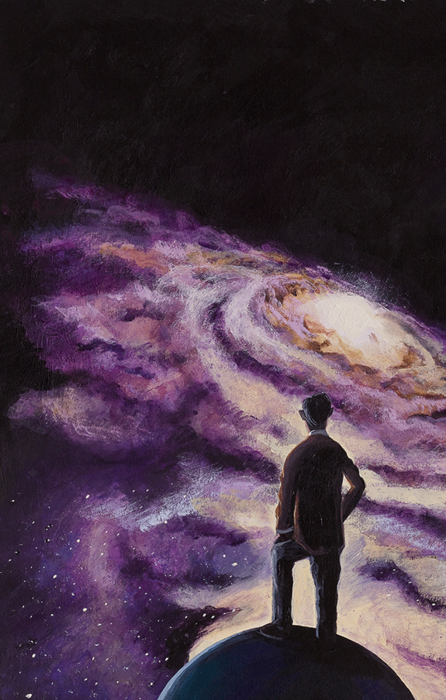
The seminal paper outlining Dyson’s discovery was published by The Physical Review in 1949 under the title “The Radiation Theories of Tomonaga, Schwinger, and Feynman.” While this question was a central problem of physics, the solution was a mathematical one that Dyson was uniquely positioned to solve given his quantitative training. Dyson’s insights provided a more precise understanding of sub-atomic particles consistent with quantum mechanics and special relativity, enabled the first use of Feynman diagrams in calculating scattering amplitudes, and showed how perturbative QED could be logically understood. Shin’ichirō Tomonaga, Julian Schwinger, and Richard Feynman were jointly awarded the Nobel Prize in Physics in 1965 for their work in this area.
At the invitation of J. Robert Oppenheimer, Dyson joined IAS as a Member in 1948 and returned to the Institute for a second Membership in 1950. The following year, he accepted an offer of a full professorship from Cornell University. Dyson was invited back to IAS for a third time in 1953 to take up a permanent appointment to the Faculty, joining a group of the century’s top physicists and mathematicians, including Albert Einstein, Kurt Gödel, Tsung-Dao Lee, Deane Montgomery, Marston Morse, Abraham Pais, Carl Ludwig Siegel, Atle Selberg, Oswald Veblen, John von Neumann, Hermann Weyl, and Chen Ning Yang.
The Institute provided Dyson the freedom and flexibility to follow his curiosity to new areas and fields. In 1956, Dyson began a three-year association with General Atomic, where he worked to design a nuclear reactor that would be inherently safe, or, as colleague Edward Teller put it, “not only idiot-proof, but Ph.D. proof.” The TRIGA reactor is still in production today and used mostly by hospitals.
In 1958, he took a leave of absence from the Institute and moved to La Jolla, California, to join General Atomic’s “Project Orion,” working with forty scientists to design an atomic spaceship capable of riding a wave of controlled nuclear pulses into deep space. Dyson recalled the fifteen months spent on the short-lived project as “the most exciting and in many ways the happiest of my scientific life.” The ambitious project had once set its sights on “Mars by 1965, Saturn by 1970.”
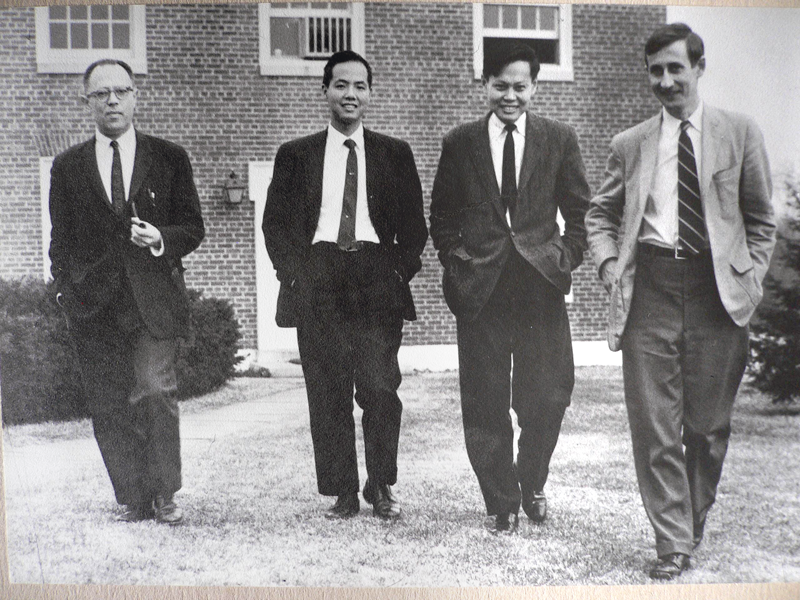
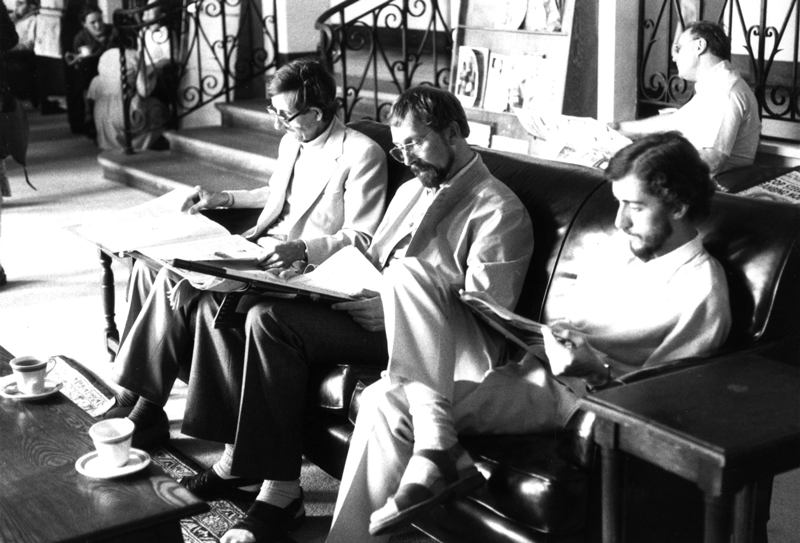
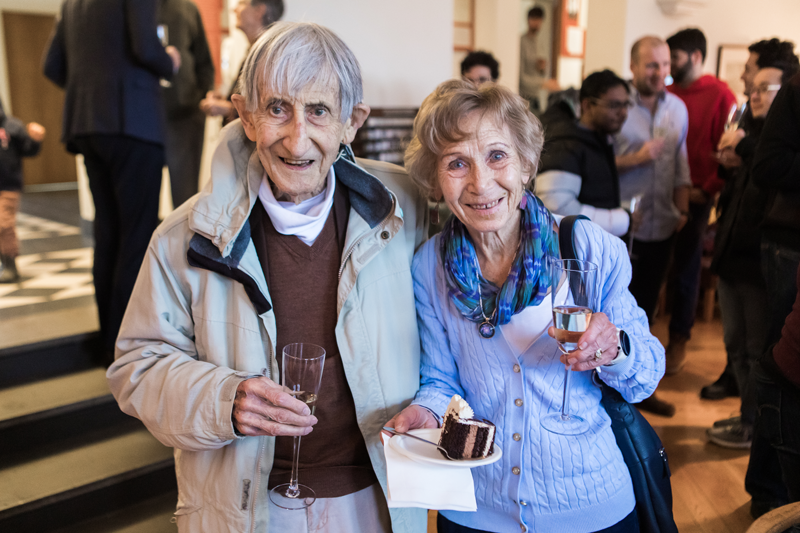
Dyson was engaged in the public debate regarding the nuclear test ban treaty and whether or not an exception should be made for purposes of experimentation. In 1960, he was elected to the council of the Federation of American Scientists, and selected as its chair two years later. From this post, he became an effective advocate for the creation of the Arms Control and Disarmament Agency, which existed until 1999 when it was merged with the U.S. State Department. Dyson’s work with this newly created agency gave him greater opportunities to examine the potential consequences of a nuclear war. Concluding that further nuclear testing was “wrong technically, wrong militarily, wrong politically, and wrong morally,” Dyson testified before the U.S. Senate in favor of the nuclear test ban treaty in 1963.
Dyson continued to educate the public on important questions of science, becoming a highly sought-after lecturer and frequent contributor to popular scientific publications on a wide variety of topics, including the relation of science to religion, the prospective colonization of the solar system, harnessing the energy of stars, and climate change. In turning from science to writing, Dyson often recalled the advice of his undergraduate mentor G. H. Hardy, “‘Young men should prove theorems, old men should write books.’ So I decided in 1975 to follow Hardy’s example. Like Hardy, I did not stop proving theorems altogether, but my output of theorems gradually diminished as my output of books increased. I have found, like Hardy, that the art of weaving sentences into a story can be as creative as the art of weaving ideas into a theorem.”
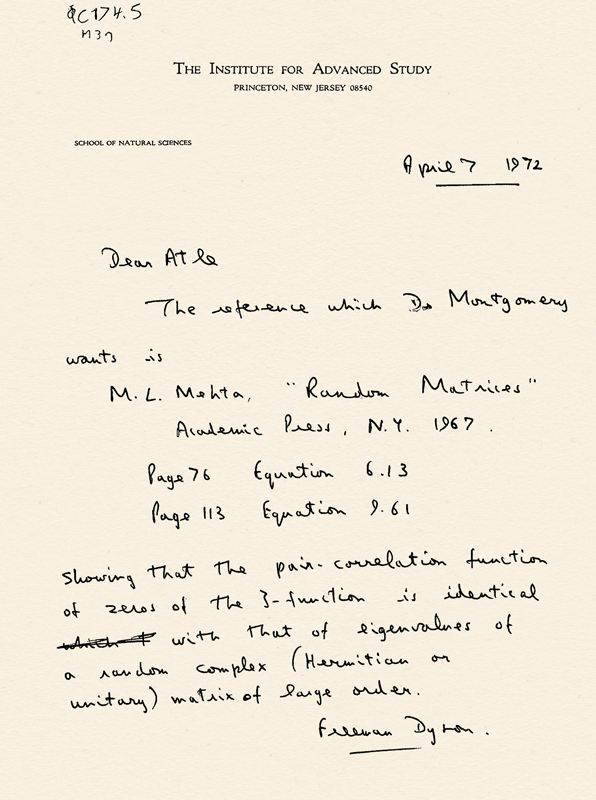 Shelby White and Leon Levy Archives, Institute for Advanced
Study
Shelby White and Leon Levy Archives, Institute for Advanced
Study
April 7, 1972, letter to School of Mathematics Professor Atle Selberg after a teatime conversation with former Member Hugh Montgomery. Dyson saw that the statistical distribution found by Montgomery appeared to be the same as the pair correlation distribution for the eigenvalues of a random Hermitian matrix that he had discovered a decade earlier.
Dyson produced a steady stream of books geared for the scientifically curious among the general public. They include Disturbing the Universe (1979); Weapons and Hope (1984); Infinite in All Directions (1988); Origins of Life (1986); From Eros to Gaia (1992); Imagined Worlds (1997); The Sun, the Genome and the Internet (1999); The Scientist as Rebel (2006); A Many-colored Glass: Reflections on the Place of Life in the Universe (2007); and Maker of Patterns (2018).
For his contributions to science, mathematics, and public policy, Dyson has been honored with over twenty honorary degrees and has been elected to numerous learned societies, including the Royal Society and the National Academy of Sciences. Among Dyson’s accolades are the National Space Society’s Robert Heinlein Memorial Award (2018), the Henri Poincaré Prize of the International Mathematical Physics Congress (2012), the Templeton Prize for Progress in Religion (2000), the Enrico Fermi Award of the U.S. Department of Energy (1995), the Oersted Medal of the American Association of Physics Teachers (1991), the Wolf Prize in Physics (1981), the Harvey Prize (1977), the Max Planck Medal of the German Physical Society (1969), the Hughes Medal of the London Royal Society (1968), the Lorentz Medal of the Royal Netherlands Academy (1966), and the Dannie Heineman Prize for Mathematical Physics of the American Institute of Physics (1965).
Freeman John Dyson was born on December 15, 1923, in Crowthorne, Berkshire, in the United Kingdom. His father was the musician and composer Sir George Dyson; his mother, Mildred Lucy Atkey, a lawyer and social worker. Dyson is survived by his wife, Imme; children Esther, George, Dorothy, Emily, Mia, Rebecca, and step-daughter Katarina; and sixteen grandchildren.
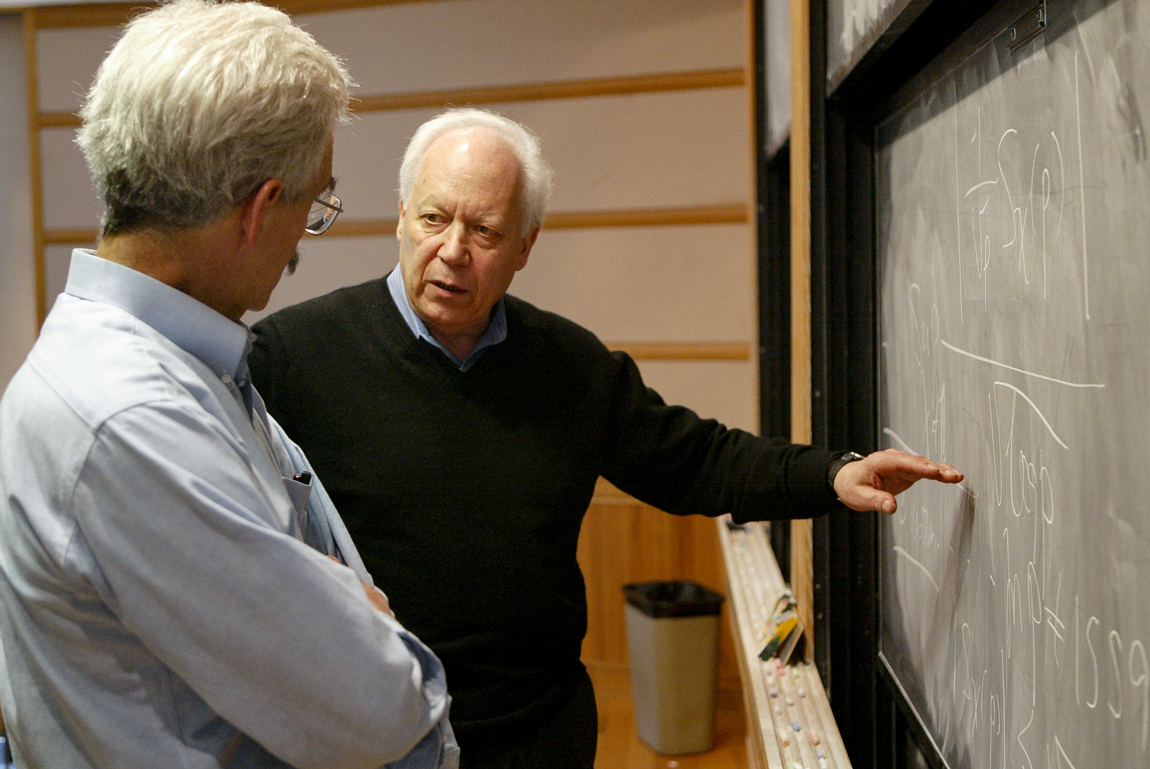
Enrico Bombieri Awarded 2020 Crafoord Prize in Mathematics
Enrico Bombieri, Professor Emeritus in the School of Mathematics, has been awarded the 2020 Crafoord Prize in mathematics for outstanding and influential contributions in all major areas of mathematics, particularly number theory, analysis, and algebraic geometry.
The Crafoord Prize is awarded in partnership between the Royal Swedish Academy of Sciences and the Crafoord Foundation in Lund.
More than half of the 26 Crafoord Prizes in mathematics and astronomy awarded to date have gone to IAS scholars, including Louis Nirenberg (1982), Pierre Deligne (1988), Simon K. Donaldson (1994), Shing-Tung Yau (1994), Alain Connes (2001), James Gunn (2005), P. James E. Peebles (2005), Martin Rees (2005), Maxim Kontsevich (2008), Rashid Sunyaev (2008), Edward Witten (2008), Jean Bourgain (2012), Terence Tao (2012), Yakov Eliashberg (2016), and Roger Blandford (2016).
Bombieri first joined the Institute as a Member in 1974 and was appointed to the permanent Faculty in 1977. He is the recipient of numerous honors including the Fields Medal (1974) for his work on the large sieve and its application to the distribution of prime numbers. Bombieri was born in Milan, Italy, studied classics in Tuscany, and received his Ph.D. in mathematics from the Università degli Studi di Milano in 1963. He is also a trained artist.
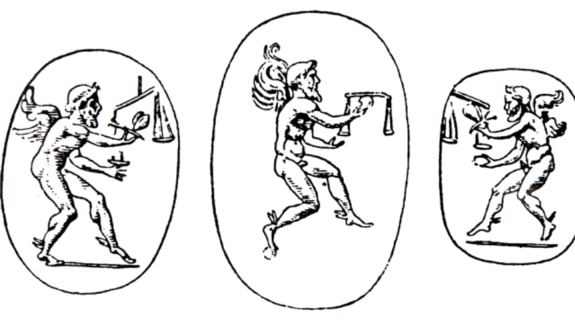
Kairos: The Right Moment or Occasion
An exploration into the peculiar representations of Kairos in art history and iconography
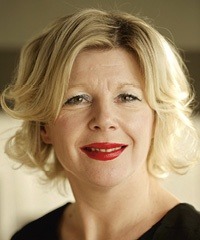
by Barbara M.T.P. Baert
Franz Werfel (1890–1945) ends his novella Pale Blue Ink in a Lady’s Hand with the protagonist Leonidas dozing off: “While sleeping under the oppressive dome of the ever-louder music, Leonidas knew with inexpressible clarity that today an offer of salvation had been made to him—dark, muted, vague, like all such offers. He knew that he had missed it. He knew that such an offer would not be made again.”
The ancients had a word for the joy and the sorrow of an opportunity that suddenly presents itself but is just as suddenly gone: kairos. The word goes back to before Homer.
One of the meanings of the Greek kairós is a crucial but vulnerable part of the body. This sense of the word is closely related to the Homeric to kairion: the part of the body that can be “hit” to most devastating effect, the place where life is most in danger (Iliad 8.48), or the place where the rock that Hector threw hit Teucros: “just between the shoulder and the neck” (Iliad 8.326). Kairos is the point that makes sacral “passage” possible, the right place, the “target,” the place where the knife pierces the skin.
Doro Levi’s extensive study shows that the Homeric kairos was part of a group of related words of uncertain origin: kèr: death; keraïzein: to plunder, to slaughter; kèr: heart; kèrainein: to be anxious; kar: lock of hair; keiein: to split; keirein: to cut. All of these related roots have at their kernel the idea of splitting or division, an action of sacrifice in a ritual context.
Gradually kairos came to connote a complex system of signification linking time and space, qualitative and quantitative elements, at a hermeneutic intersection, a knot or node so perfect that it provided the only possible “occasion.” The knot is “fit” to intervene, where the moment is “striking.” If, however, a single parameter of the intersection were lacking or out of balance, then the knot would unravel and the occasion would not present itself. This is why kairos is also a mirror of cosmic perfection. In the world of Pythagoras, kairos reigns as measure, harmony, and equilibrium. His mystical number is seven, a cyclic “point of crisis.” Kairos turns, turns into; he marks the Wendepunkt. Kairos is therefore border, threshold, and limit, as well as transition, change, and progress.
For a long time, kairos had no anthropomorphic form. A Homeric hymn to Hermes has the earliest reference to Kairos as a fair young man and a son of Zeus. Both Hermes and Kairos have winged feet (or even winged shoulders), an epithet that would later be reflected in the iconography, referencing the speed and decisiveness with which both Hermes and Kairos change the elements of the world. Both also carry a weighing scale and/or a razor.

Kairos teaches people to recognize the right moment for quick and calculated action. Late classical texts describe Kairos as bald but for a flowing lock of hair on his forehead: the forelock to be grasped. This provided the subject of Matzke’s linguistic study To Take Time by the Forelock. The author investigated the Italian expression tener la fortuna pel ciuffo or pel ciuffetto, alongside the English to take time by the forelock and the Dutch de gelegenheid bij de haren grijpen.
In an epigram, Posidippus of Pella (mid-third century B.C.E.) described a now-lost bronze sculpture of Kairos by the sculptor Lysippus (last quarter of the fourth century B.C.E.) in the following terms (in John E. Matzke’s translation):
Who, whence is thy maker? Sicyon. His name is what? Lysippus. What art thou? Kairos, the all-subduer. Why doest thou stand on the tips of thy toes? I turn forever. Why hast thou double wings on either foot? I fly carried by the wind. In thy right hand why carriest thou a razor? To men a sign that quicker than any edge I am. But thy hair, why is it over the eye? In order to be grasped, forsooth, by him that meets me. The back of thy head, why is it bald? Because he, whom I have once rushed by with winged feet, will never grasp me afterwards, though he desire it. Why did the artist fashion thee? For thy sake, o stranger, he placed this warning lesson into the doorway.
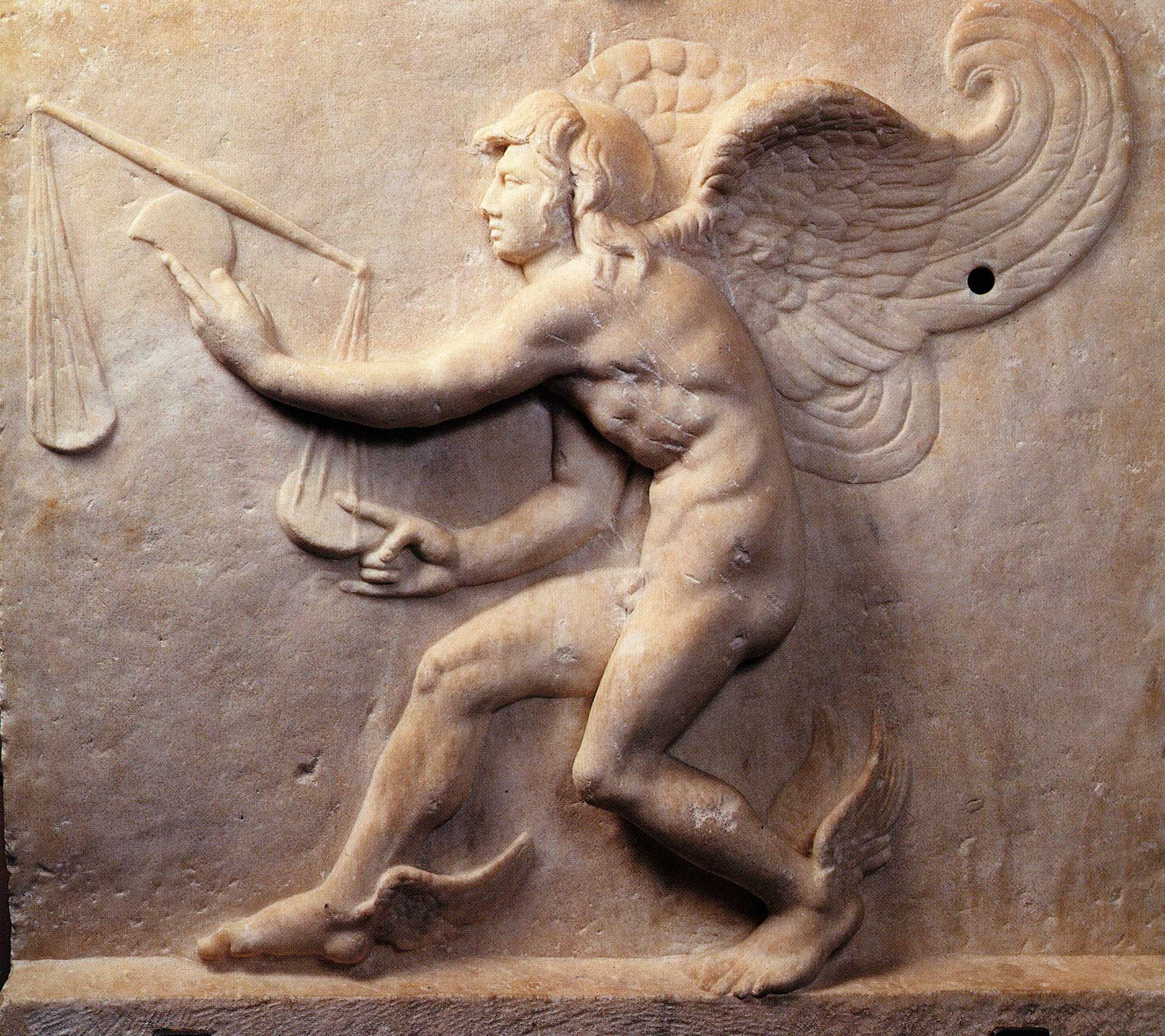
Besides literary descriptions we now also have copies of the image on gems and on stone reliefs, including a very fine example (second century B.C.E.) in Turin’s Museo di Arte Greco-Romana. The Turin version shows how Lysippus achieved a virtuoso balance between proportion, movement, and detail. The dichotomy between the movement of the legs and the torso runs through into the neck and the head. The double antithetical movements are in a sculptural dialectic with the integration of movement. The Greeks expressed such ideas of antithesis, integration, synthesis, and captured moment with the concept of erèmia: the “pregnant pause” between two successive moments. The pregnant pause is the combination of two distinct movements captured in a single image, frozen as an artistic manifesto of the capabilities of sculpture and, by extension, of what Kairos as the god of occasion can contribute to the definition of the arts.
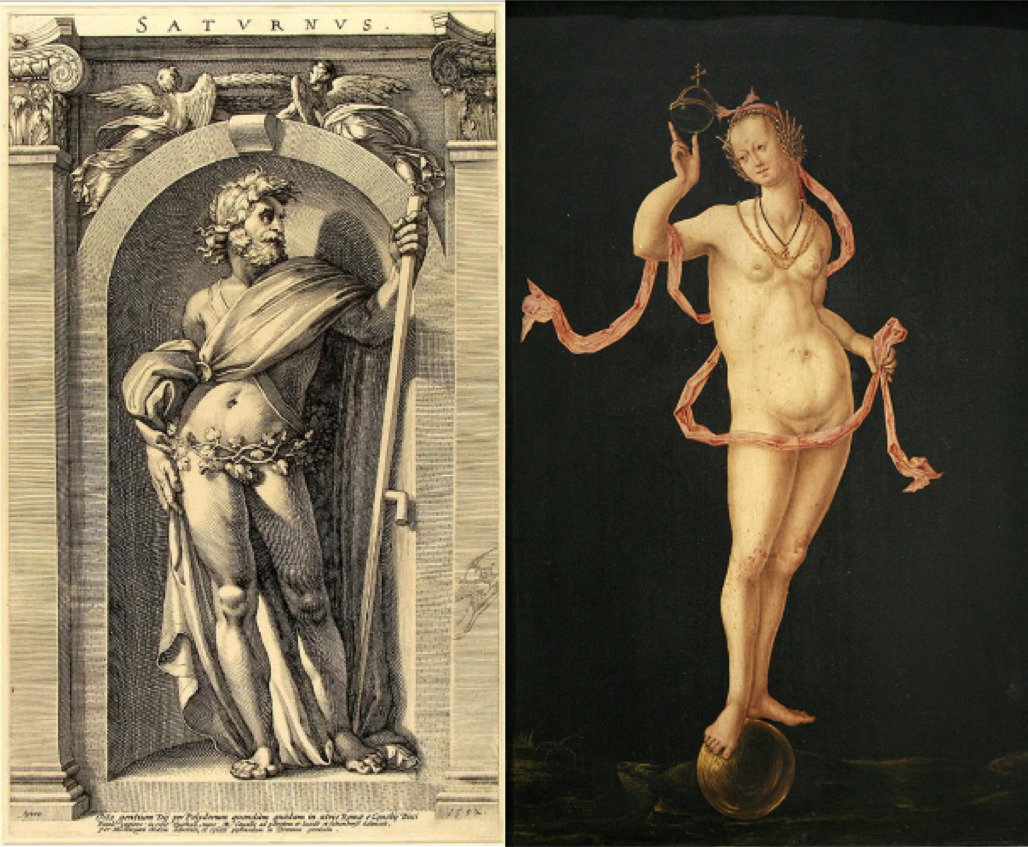
In the first century B.C.E., Plutarch of Chaeronea wrote in his Moralia: “Beauty is achieved through many numbers coming into congruence [kairos] under some system of proportion and harmony whereas ugliness is immediately ready to spring into being if only one chance element be omitted or added out of place.”
Artists saw a particular challenge in the theme. The Kairos figure’s afterlife in Western intellectual and art history is not simple, as the transposition of the concept into Latin and the vernaculars also led to iconographic transformations. In the Latin Bible, kairos was consistently translated either as tempus, so losing some of the specificity of its meaning, or was replaced with the concepts occasio and fortuna—both of which, grammatically, change the masculine gender to feminine.
In his Father Time, Erwin Panofsky (1892–1968; IAS Faculty 1935–1968) provided the first study of these semantic and artistic mutations. In his view, from the eleventh century onwards the figure of Kairos cross-fertilized with descriptions and depictions of another concept, namely fortuna. The Carmina Burana (eleventh to twelfth century) indeed sing of Fortuna: “the forehead may have hair, it is true, but it is generally followed by a bald crown.” The author sees the classical Kairos, but speaks of Fortuna.
As a result, the Middle Ages and the beginning of modernity saw a range of iconographic ramifications around the concept of time: Fortuna on the wheel, Occasio as a woman on a flying globe, and a bearded, old man as Chronos.
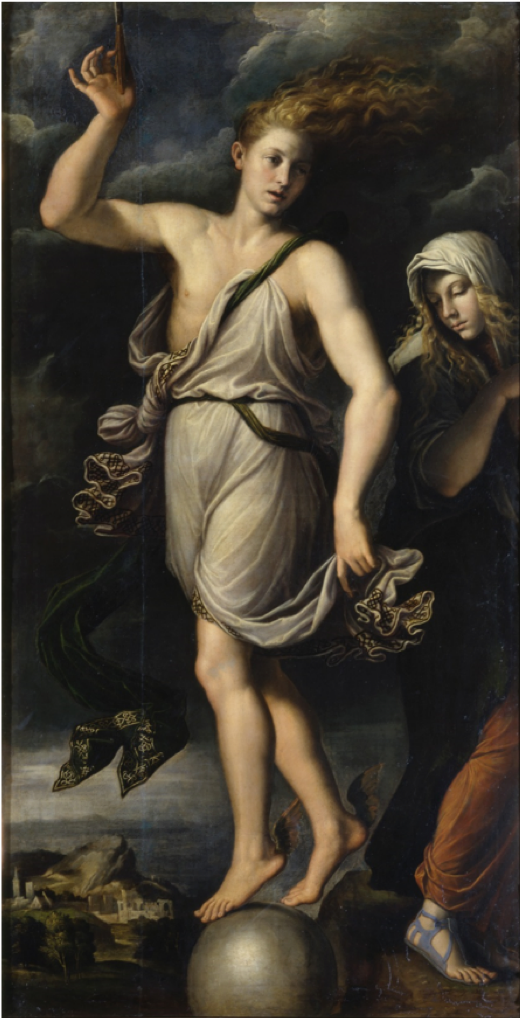
A particularly interesting example can be seen on a grisaille from Mantua, produced in the workshop of Andrea Mantegna (1431–1506). A female figure with a bunch of hair over the front of her face moves forward with winged feet on a globe. She is Kairos transposed into a female Occasio. Her clothing flutters dynamically in the wind, in contrast to the two static figures beside her. On a solid, rectangular base that also contrasts with the flying globe, a woman with a headdress is holding a young man as though to restrain him from grasping or chasing after the woman on the globe. She is penitence, Poenitentia. The pathos is confirmed by the young man’s arms, stretching in vain towards Occasio. It was Aby Warburg (1866–1929) who linked this iconography not only to Occasio/Poenitentia, but also indicated that it is an almost literal illustration of an epigram by Ausonius (ca. 310–ca. 395) in which there is a dialogue between Occasio and Poenitentia (Greek: Metanoia, penitence, repentance).
An important aspect of the Christianization of Kairos lies in the preference for a tension between opportunity and penitence. This made Kairos part of a moral discourse, both in a religious context and in the courtly and political world.
The scene in Mantua plays upon this. Just look at the sober woman’s marked restraint, the young man’s impulsiveness, and the ambivalent way in which Occasio looks back at the boy rather provocatively. The artist interpreted Occasio as a fickle, capricious Fortuna as opposed to the virtue of constancy that keeps the youth from impetuosity in decisions and in life.
The grisaille was described by Mario Equicola (1470–1525), a courtier of the Estes, in a letter written to the Duke of Gonzaga on June 12, 1503. He wrote that the old poets said that fate was a winged woman with hair before her face so that she cannot be recognized, and once having passed she cannot be called back:
Dicono li poeti essere una donna alata et tucti li capelli sonno voltati denanti al vulto per non essere cognosciuta et ad ciò fugendo, non possa per capelli essere revocata.
And indeed, no less a figure than Niccolò Machiavelli (1469–1527) describes in The Prince (1513) how the able ruler recognizes and seizes the right moment.
It is generally thought that the painting that Girolamo da Carpi (1501–1556) produced for Ercole II d’Este (1508–1559), Duke of Ferrara, arose in Machiavelli’s milieu.
The painting translates the awareness that the prince’s dynastic inheritance needs to be “earned” with the virtue of Kairos. This virtù reveals itself in alertness to recognize the moment, then to turn it into political decisiveness and action for a whole community.
To recap:
Both etymologically and metaphorically, Kairos is active in the field of splitting, targets, transition, passage, and entering through an opening. By analogy, Kairos is goal-oriented but ephemeral, sudden but unavoidable. He shares these characteristics with the wind, which can likewise arise out of nothing and die down even faster. His waving forelock suggests he is driven forwards by the wind at his back.
Kairos is kin to angels and spirits as prototypical personifications of the wind. Kairos unites aspects of the wind to human destiny: to the wheel of fortune, the vanes of the mill that has energy and effectiveness thanks to the wind.
There Kairos suddenly appears: in the fleetingness of a sigh, in the quivering of a breeze, in the unexpected movement of a lock of hair. The Greeks put it so beautifully: in the erèmia, the “pregnant pause.”
Such as between two notes of music.
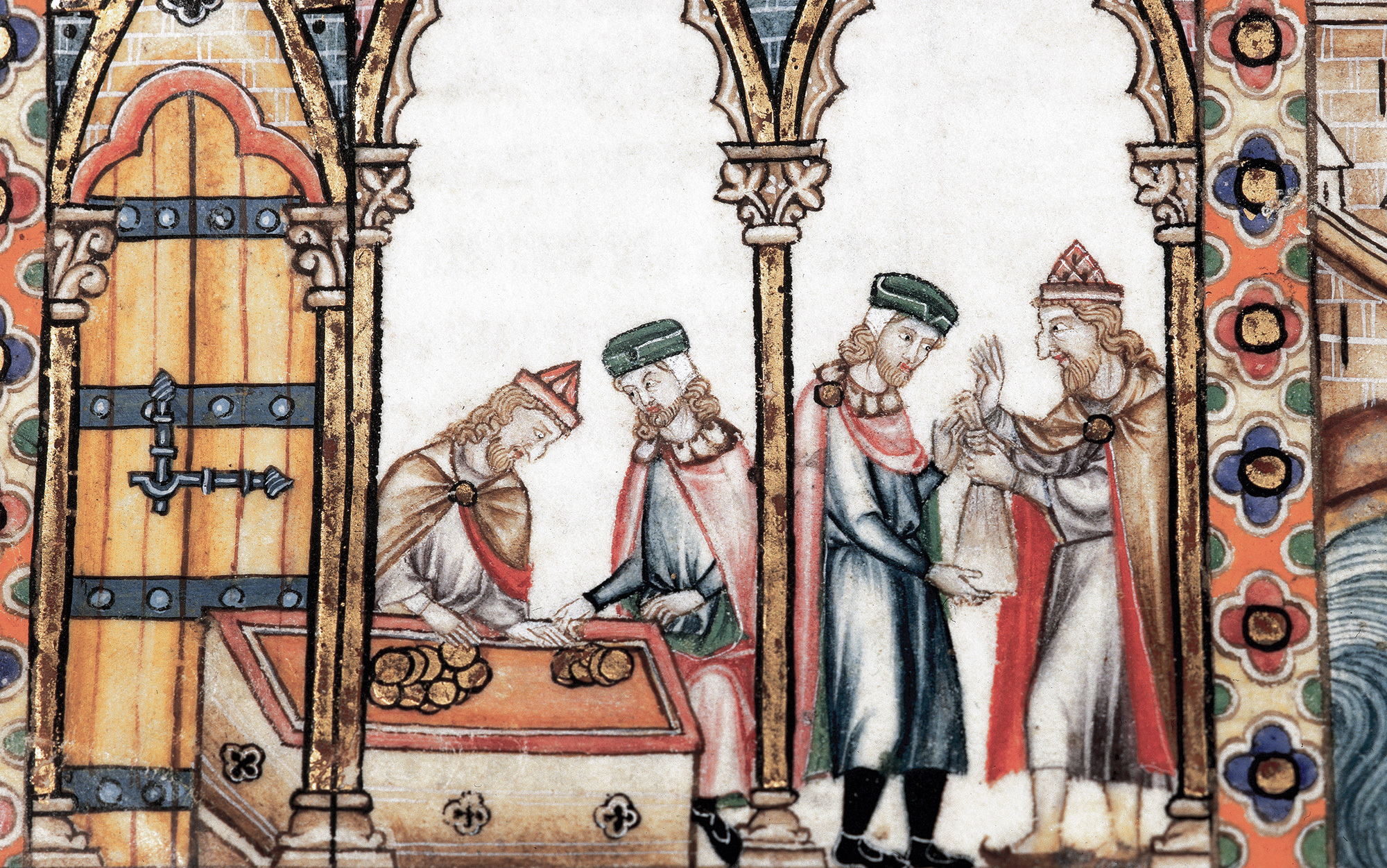
The Rumor About the Jews
How antisemitism flourished in response to the unsettling, abstract growth of financial capitalism
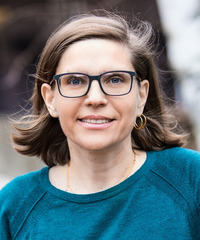
by Francesca Trivellato
The question of what links medieval to modern antisemitism is one of the most controversial topics in modern history. Among the most thought-provoking arguments about the matter is a lecture that the renowned Jewish historian Yosef Hayim Yerushalmi delivered in 1982: “Assimilation and Racial Anti-Semitism: The Iberian and the German Model.” Yerushalmi’s argument is not entirely convincing, but rests on a compelling analogy. For him, baptism was to medieval Europe what legal equality is to modern liberal societies. In theory, baptism and citizenship eliminated all discrimination against Jews. In reality, they gave rise to new fears that, even as their distinctiveness disappeared, Jews would remain fundamentally different. This imagined difference, no longer marked as apostasy to Christianity or disloyalty to the state, suffuses what Theodor Adorno in 1951 called “the rumour about Jews”: a conspiratorial mentality that sees Jewish people as invisible and yet ubiquitous, as capable of pulling the strings of power from behind the scenes.
Yerushalmi used the analogy between baptism and citizenship to contest the opposition between a medieval, religious anti-Judaism and a modern, secular and racialized antisemitism. But there are more and different lessons to be drawn from his insight. One of these lessons concerns the penchant of learned and popular authors, from the Middle Ages to the twenty-first century, for linking capitalism to Jews. This durable and protean connection has nothing to do with any historical role played by Jews in the development of European capitalism. It has everything to do with the social transformation and uncertainty that accompanied the advent of capitalism, especially finance capitalism. More than five hundred years before the industrial revolution, finance capitalism, represented by paper instruments, enabled new kinds of commerce over long distances and generated new wealth. But this wealth was increasingly disconnected from the production and exchange of material goods. It overturned traditional economic models and threatened the established social order. The more capitalism became intangible, the more the rumour about Jews spread.
Read more at Aeon.co
Francesca Trivellato, Andrew W. Mellon Professor in the School of Historical Studies, is a leading historian of early modern Italy and continental Europe who has made groundbreaking contributions to our understanding of the organization and culture of the marketplace in the pre-industrial world.
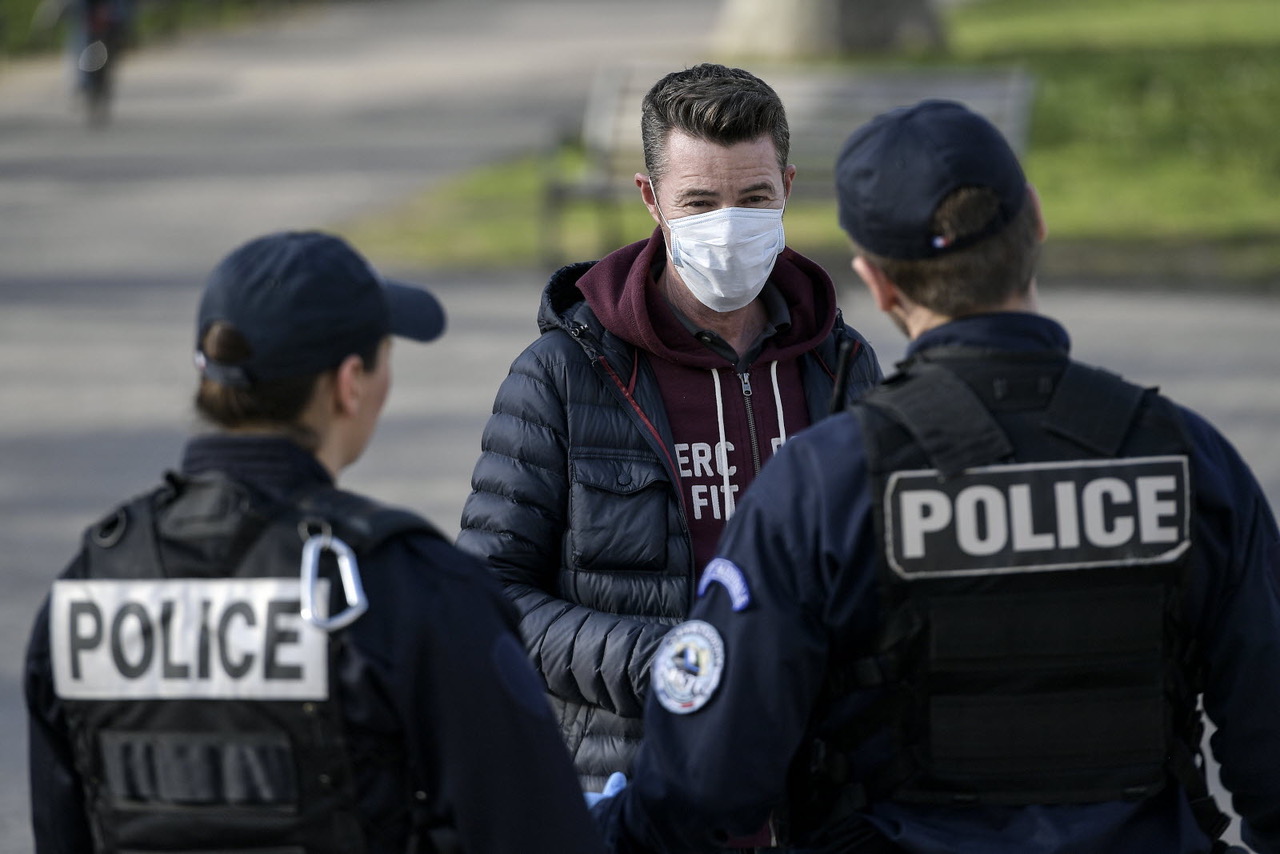
The Dangerous Illusion that We Are All Equal Before the Pandemic
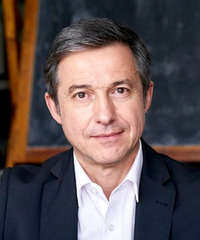
by Didier Fassin
Didier Fassin, James D. Wolfensohn Professor in the School of Social Science, was elected to the Annual Chair in Public Health at the Collège de France in September 2019. His inaugural lecture, “The Inequality of Lives,” was delivered on January 16, 2020. Due to the coronavirus epidemic, his eight other lectures will be postponed to the academic year 2020–2021. The following text is a reflection he proposed on the inequality of lives in the time of Covid-19.
(Author’s note: Facts and knowledge related to the pandemic change fast. While the theoretical analysis presented here should stand the test of time, some empirical elements may have evolved since the paper was published in mid-April 2020).
The common perception that the coronavirus affects all of us without differences between men and women, young and old, rich and poor, urban and rural populations, white-collar and blue-collar workers, is certainly useful in encouraging everyone to comply with the necessary preventative measures, and to a certain degree it is understandable that the politicians who are in charge are using it as an argument. But it is profoundly wrong, and it is even a dangerous illusion, because it leads to ignorance and inertia where lucidity and action should take the upper hand. Using it may thus be a good tactic, but it is a poor strategy.
The fact that epidemics have unequal consequences across society is a well-known fact. Historians have shown it in the case of the 1830 cholera outbreak in Europe, epidemiologists have established it for the 1918 Spanish Influenza in Chicago and the AIDS epidemic in South Africa at the beginning of the twenty-first century; and I had noted it with regard to measles and smallpox when I was studying nineteenth-century parish registers in Ecuador. But for what concerns Covid-19, few countries have provided data so far.
The first analyses conducted in the United States have shown, however, that in Michigan and Illinois, the risk for African Americans to be infected was twice as high as their demographic importance in the general population would suggest, and that this ratio was even three times higher for the risk to die from the disease. In Louisiana, where African Americans represent a third of the population, they accounted for more than two-thirds of all fatalities. In New York City, their adjusted mortality rate was twice that of whites. Many explanations concur to explain this high morbidity and mortality rate: most of those who are part of the black minority have jobs that do not allow them to work from home; they often live in poor neighborhoods and low-income housing where close contact is less avoidable; they are not offered testing as frequently when they have symptoms; if they are sick, they often have aggravating health conditions, such as diabetes, asthma or heart disease; and finally, if they have to be hospitalized, it is difficult to access intensive care for those who have no medical insurance. But the coronavirus just emphasizes a more general fact, namely the higher morbidity and mortality among African Americans whose life expectancy at birth can be up to fifteen years shorter than that of whites. France has not published any data that includes indicators of differences in social status, but everything points to the conclusion that the same causes produce the same effects there, as has already become evident from the statistics of deaths in Seine-Saint-Denis, the poorest département in France with the highest concentration of ethnic and racial minorities.
Recommended viewing:
Click here to watch Didier Fassin’s inaugural lecture at the Collège de France, “The Inequality of Lives.”
A lot has been said about disparities of survival in infected individuals with regard to their age, with higher fatality rates for those who are over 75, and with regard to their overall health, in particular if they have preexisting conditions. In this case, one can speak of vulnerability, because possibilities to modify those factors are limited, even if ageing and several of those preexisting health conditions are closely tied to social background. But there are two other situations where it is possible and urgent to take action. The French case will serve to illustrate these conditions, but the analysis would be true for other contexts.
A first type of disparity concerns the groups who are socially disadvantaged, whose housing and work conditions make it difficult to respect the preventive measures, whose access to testing sometimes proves to be more difficult and who very often have to make do without proper care. These disparities affect especially people living in low-income neighborhoods, large housing projects, and the more or less lawful camp sites of Roma people. They can be referred to as inequalities, which are made worse by a dual injustice. First, as they are often accused of being undisciplined, they are burdened with the higher risk to which they are exposed, a phenomenon called blaming the victim. Second, in the context of the state of emergency, they are subject to more repressive control measures than the rest of the population.
A second type of disparity affects three categories of people whom society, through the policies of its government, exposes deliberately to the risk of infection by confining them in conditions that make the very prevention they promote impossible. First, prisoners in jails—44 percent of whom are on remand, therefore awaiting trial, and 27 percent of whom are sentenced to less than one year in prison, thus often for minor crimes—have been subject to an increasing overpopulation over the years, which often results in two or three inmates sharing a cell that is made for one person. The welcome release of several thousands of inmates by the Ministry of Justice has not however compensated for the fact that due to the occurrence of multiple cases among prisoners, the quarantine of the latter as well as that of the inmates who had been in contact with them have again increased the overpopulation in the rest of the cells, making the incarceration conditions intolerable for the prisoners as well as for the guards. Second, there are the migrants and refugees who are held in detention centers under the threat of being sent back to their country. They are in a situation that is dangerous as well as absurd, because there are no longer any flights to deport them. Some have been freed, but the others are reduced to hunger strikes and auto-mutilation in order to attract the attention of the public to the unsanitary conditions in the facilities where they are being held. Third, many of the homeless poor and asylum seekers have been put together by the hundreds in gymnasiums and other places where they are subject to alarming promiscuity, while others are surviving in public spaces where prevention is impossible. These three cases correspond to situations of discrimination in the strict sense of unfavorable treatment based on an illegitimate criterion, since neither committing a misdemeanor, nor lacking a residence permit, nor being destitute can justify them being exposed to the risk of a fatal disease.
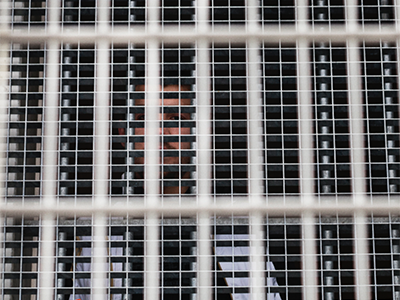
Vulnerability, inequality, discrimination—three concepts that differentiate three types of disparity in the context of Covid-19. There are overlaps between the three, but the interest of this triptych is to suggest specific forms of collective responsibility with regard to each of these situations and, consequently, actions that are focused on reducing these disparities. Prevention through confinement and high-quality care, as they are now being put in place, are relevant responses to vulnerability. A policy based on the principle of sanitary justice rather than mere deployment of sanitary policing in low-income neighborhoods, with more widespread testing and earlier health care would contribute to reducing inequalities. Finally, respecting the legal obligation to provide individual prison cells, which implies the release of inmates whose incarceration may not be justified because as they await their trial, they are presumed innocent, or since they have been sentenced to short terms, they could benefit from alternative measures, would reduce discrimination, as would also the temporary closure of migrant detention centers and finally suitable housing for people who live in the street or are crammed in collective spaces. Of course, these conceptual categories and political responses also apply, to a large extent, to situations encountered elsewhere in Europe, and especially to the undignified conditions in the detention centers where asylum seekers and migrants are held in Greece.
The Covid-19 pandemic has brought to light a new fact: threatened by a potentially lethal virus, life has all of a sudden become our most precious good, so precious that we have been able to sacrifice, at least partially, another good that many considered superior, namely the neoliberal idea of an indefinite economic growth associated with permanent cuts on public spending. The reversal of our values has resulted in the fact that biological life has become more important than economic life. Health over wealth. This is a historic moment, at the height of what I have called biolegitimacy, namely the recognition of the mere fact of being alive as supreme good, in Walter Benjamin’s words. The fact that everyone has experienced the sense of being potentially threatened by the epidemic has definitely contributed to this major development.
Even so, it is obvious that not all lives are equal. In this respect, one cannot forget that France occupies the third place in Europe with regard to premature mortality, in other words, deaths occurring before 65 years of age, and sadly, the first place with regard to avoidable deaths, in other words, those occurring prior to age 65 that could be avoided. And we also cannot ignore the thirteen years of life expectancy difference at birth that separate the richest 5 percent from the poorest 5 percent. The celebration of life that the coronavirus has induced does not have the same meaning for everyone, and it is even likely that this epidemic will increase mortality inequalities, not only due to the consequences of the disease, but also, more importantly, due to the effects of the economic recession.
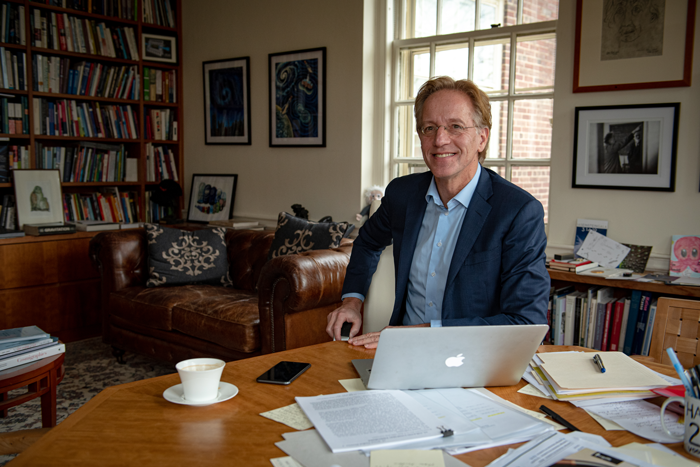
IAS, Covid-19, Science and Society
Taking a bird’s-eye perspective while driving fast through thick fog
with Robbert Dijkgraaf
Robbert Dijkgraaf, Director and Leon Levy Professor of the Institute for Advanced Study, sat down virtually with Joanne Lipman, IAS’s Peretsman Scully Distinguished Journalism Fellow, to discuss the coronavirus epidemic, its impact on IAS, and the elevated role of science in society. This interview was conducted on March 25, 2020. It has been edited for length and clarity.
Joanne Lipman: What are your priorities for the Institute right now?
Robbert Dijkgraaf: The most important priority from the very beginning has been to keep the Institute community safe and well. And, very explicitly, not only our scholars, but also our staff and the extended Institute family.
JL: At a time like this, what role does the Institute play?
RD: We often talk about being a community of scholars in an abstract sense… but this time it has become much more concrete, taking care of each other. We’re trying to react as best as we can on the individual needs, which are quite diverse.
At the same time, we’re also supporting people who are able to keep their scholarship going. That’s our mission too. It’s also important for many people to keep on working. Although these are difficult times, there are virtual seminars, virtual working groups, even virtual tea times. In fact, in the physics seminars I saw some of my friends and colleagues from distant universities. So, we are able to connect to a wider audience.
I’ve also noticed a wonderful initiative that Alondra Nelson, Harold F. Linder Professor in the School of Social Science, took called the “#CoronavirusSyllabus” to provide background literature for scholars studying the current crisis. It is great to see the academic world coming together.
JL: You hear about scientists who have done remarkable work at a time when they are isolated or at a time of great stress. Shakespeare, for example, lived during the Black Plague, and it was a fruitful and productive time, because everyone was isolated.
RD: Again, this is hardly an ideal circumstance but there is the famous story that physicists have always been told about Newton basically inventing modern science when he was sitting under the apple tree at his home, having had to leave Cambridge following an outbreak of the bubonic plague. I think this is setting the bar rather high.
The big difference is, when Shakespeare or Newton had to be in self-isolation, they weren’t checking their phones every minute.
JL: Ah, yes.
RD: Because we are still in constant communication, I would be surprised if we got kind of a creativity bump out of this. I think that would be probably a bit too much of a glass-half-full view. Personally, I certainly feel quite overwhelmed by it all.
But I am heartened by the past. As an institution, we went through grave crises before. Think about the very first scholars who came here, right in the Depression, with all the political turmoil in Europe, and yet at that time believing that the most important contribution they could make is to long-term thinking about the world and the universe.
When we look back at these many troubled periods, we can conclude with confidence that the mission that we are involved in has stood the test of time. There is a need for looking through this mist, this thick fog that now surrounds us.
The History Working Group is a Member-led initiative that mobilized in early 2017 in response to President Trump’s executive orders banning travel and immigration from seven predominantly Muslim countries. The group has documented how IAS responded to similar challenges in the past, finding its ethos as a place of refuge and active engagement with the world.
Watch "A Refuge for Scholars: Contemporary Challenges in Historical Perspective" now.
JL: How does basic research at IAS impact public health?
RD: There are definitely relevant areas of research. Biologists study the mathematical modeling of the genetic diversity and spread of viruses. Social scientists study science policy, to which extent the voice of science is heard within policy, public health, and the most fragile segments of society. Historians and scientists shed a light learning from previous pandemics.
On the other hand, I think this crisis makes clear that you can’t improvise research. The only way to address current issues from a scientific point of view is to have done the research many years ago when it might have looked less relevant.
JL: You’ve been a proponent of open access to scientific discoveries. What role does that play in the current crisis?
RD: I find it encouraging that the scientific community has come fast together. There is a rapid exchange of information. It’s remarkable to see that in the biomedical field researchers are now using open access. They’re sharing information that’s not behind pay walls.
Again, a crisis clears the mind. It’s totally obvious now that if somebody finds a certain piece of data or insight it should be accessible immediately. Some fields have been more open to sharing this information than others. I hope at least that this makes it crystal clear that there is no particular advantage of locking up scientific information. It should be accessible to everyone.
JL: You wrote recently, “It is reassuring to see how quickly the world of science has united …. Experts speaks largely with one voice. But the differences in how this voice resonates in policy are immense… Where science is a continent, government is an archipelago.”
RD: It is. There’s a unified voice of science. There’s less of a unified voice of policy.
JL: Should there be a more uniform policy for the United States? It is scattershot here.
RD: It’s totally scattershot, with even large divisions among states and cities. There’s a natural authority that comes from the voice of science, but it has to be amplified. The people in the front line are trying this, they’re doing their very best in very difficult circumstances. If one thing has become clear, that is the public at large really is desperate to hear these scientists speak out. The trust in science is strong.
JL: What are the long-term implications of Covid-19 for the Institute, and for attitudes towards science?
RD: First of all, the Institute and the research community, as all others segments of society, will be impacted by the unavoidable economic downturn. But, if anything positive can come out of this, I hope this crisis will reinforce the importance, the reliance of society on science and scholarship. That it will clarify the minds of those in government that they need evidence-based advice. There is a whole catalogue full of other terrible things that can happen to the world that scientists and scholars think about... whether it’s an economic, environmental, or nuclear crisis. So, this can also be a valuable peek into the future, showing the interconnectedness of the world and the fragility of societies. And the need of the thoughtful voice of science.
We are in this paradoxical situation where you want to jump into the here and now with so many tragedies happening. But the one thing that we can do at a place like the Institute is to be a point of reflection. We have to try to achieve the bird’s-eye perspective, and that’s very difficult to impossible to do in a moment of despair. But that’s the role of scholarship, to have this kind of social distancing to the world, to the present, in order to see the bigger picture.
JL: On a practical note, what do you see for the campus in terms of opening up again? What’s your expectation at this point?
RD: We’re driving very fast through a thick fog. It’s very difficult to predict the future. I think, we’ll just be practicing watchful waiting. We take it week by week.
JL: Is there any message that you would like to share with the Institute community and friends?
RD: Well, the one thing I find most impressive and uplifting these days is the resilience of our community, how people have been taking care of each other. Part of the spirit of the Institute is that we count on the self-organizing skills of our scholars and our staff, and that spirit shines through splendidly.
The Institute has been pretty resilient through the many decades. We survived some very intense storms. I just shared an image of the New York Times Magazine from 1941, a beautiful picture of Einstein in front of the blackboard. And the title was “Seeking Eternal Truth in a World in Chaos.” And I realize, wow, 1941 and Einstein was thinking about space and time.
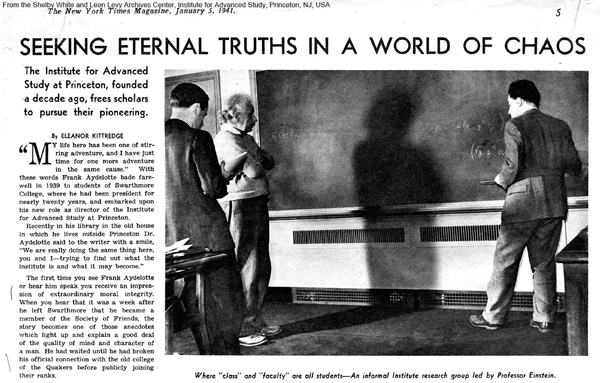 Shelby White and Leon Levy Archives, Institute for Advanced
Study
Shelby White and Leon Levy Archives, Institute for Advanced
Study
It’s a terrible storm, but, again, my most important message to members of the community is: take care of yourselves and your families and let us know what IAS, if anything, can do to help. There are many factors at play right now and the biggest one is to make sure we all remain as physically and mentally healthy as possible.
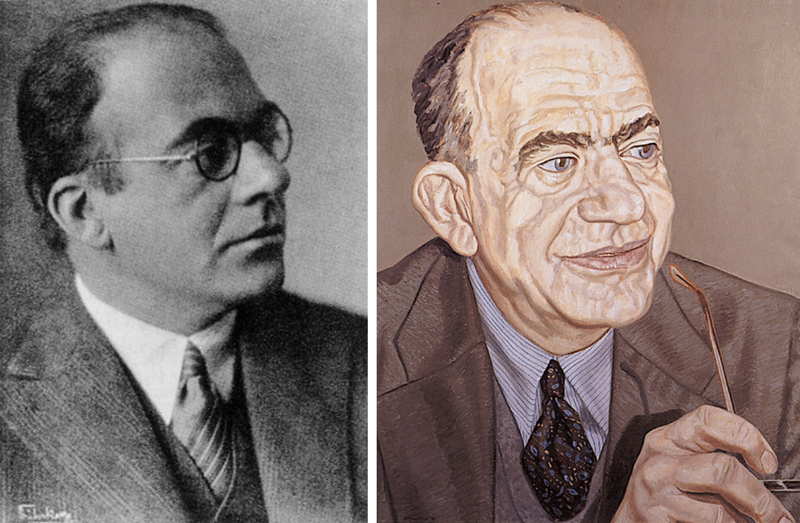
American Panofsky
Impressions of a transplanted European
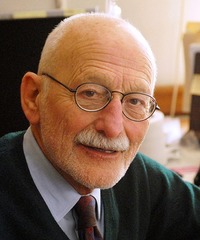
by Irving Lavin
The literature on Panofsky, his work and his life, is by now enormous, but I wanted to contribute to this volume1 because I think—maybe—I have something worthwhile to say specifically about his self-translation, as a scholar and as a human being. And I will tell you why. The answer is implicit in my title, American Panofsky, because it is not really proper English, as no doubt you are aware. We do not normally juxtapose an adjective of that kind with a noun of that kind. But the title is very deliberate and it is also metaphorical, and I hope that by the end you will understand what it means and forgive my grammatical transgression.
When we talk about Panofsky in this context, we are talking about one of his most famous writings, called Three Decades of Art History in the United States. Impressions of a Transplanted European, which we all know mostly from the republication as an epilogue at the end of his great volume called Meaning in the Visual Arts. In fact, the essay was first published with the title “The History of Art” in a volume entitled The Cultural Migration: The European Scholar in America, edited by W. Rex Crawford in 1953. It was one of a series of Benjamin Franklin Lectures delivered at the University of Pennsylvania in 1952. The other lectures included, covering a wide range of disciplines, were: Franz L. Neumann, “Social Sciences”; Henri Peyre, “The Study of Literature”; Wolfgang Köhler, “The Scientists in their New Environment”; Paul Tillich “The Conquest of Theological Provincialism”; Rex Crawford, “American thought and Latin-American philosophy.” The authors were all famous scholars in their respective fields, and Panofsky’s essay was thus delivered and published in a very distinguished context.
There is, of course, a great literature about the phenomenon of immigration of intellectuals from Germany both before and especially following the expulsion of Jews from the universities and other state institutions in 1933. Art historians, more specifically, have extensively reflected on the impact of this migration for the discipline. I will mention here only three: Karen Michel’s very perspicacious book Transplantierte Kunstwissenschaft. Deutschsprachige Kunstgeschichte im amerikanischen Exil (1999) approaches the topic of this volume probably most directly. Colin Eisler, himself born in Hamburg (1931) but educated at Yale and Harvard, thus having a personal familiarity with the German language and culture and many of the émigrés, wrote a long and admirable survey of the work of the leading immigrant art historians in the United States, Kunstgeschichte American Style. A Study in Migration. Most recently, Andreas Beyer published a magisterial study of Panofsky, Stranger in Paradise. Erwin Panofsky’s Expulsion to the Academic Parnassus, to which I fear I can add nothing, or little.
What I have to say about Panofsky can be summarized in one sentence: it has not been noted that Panofsky was, as far as I can see, the only émigré to write about what he learned in America. All the other immigrants wrote, or were written about what they achieved in America, as they properly should: how else could the range and depth of their contribution to American culture be fully grasped? By contrast, there is actually nothing about what Panofsky himself achieved in his essay. The most notable statement about his own person is in the essay’s subtitle: Impressions of a Transplanted European. This phrase alone conveys the essence of his meaning, with his usual verbal acumen. He was uprooted from one culture and took root in another.
The other migrants in one way or another normally expressed their appreciation that they were accepted and often vigorously sought after, because many of them were very famous. This point is especially true of the art historians who came to the Institute of Fine Arts, the Graduate Department of Art History, New York University, founded at exactly that moment, 1932, by a most amazing man, Walter W. S. Cook, who occupies a seminal place in our history. It was he who said: “Hitler is my best friend, he shakes the trees and I collect the apples.” And so he did. Under Cook’s aegis as director, a remarkable series of stellar German art historians came, some passing through, some remaining; that variety became the nature of the place, and that is what made it great. Virtually overnight the institute became, in my mind, the greatest art historical academic institution in the world.
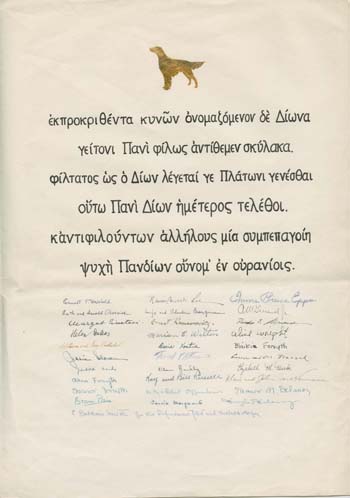 Shelby White and Leon Levy Archives, Institute for Advanced
Study
Scroll presented to Panofsky with the puppy, Dion
Shelby White and Leon Levy Archives, Institute for Advanced
Study
Scroll presented to Panofsky with the puppy, Dion
A lifelong lover of dogs, Panofsky was surprised when the entire Institute community got together to get him an Irish Setter puppy after his previous dog died. He was presented with a scroll in Greek, with the signatures of all the community members who participated in the gift. The poem, translated into English, reads:
To Pan our neighbor this selected pup
Dion yclept we
fondly offer up.
Dion was Plato’s dearest love, ye
know,
So may our Dion to Pan’s darling grow;
And may
one soul compact of mutual love
Be named Pandion by the
gods above.
Panofsky begins his essay with three brief personal paragraphs describing, as he thought proper, his life in the United States following his dismissal from the University of Hamburg, along with that of all Jewish officials from German universities, in the spring of 1933. The purpose of these paragraphs was to confess that his own experience was from the outset not typical since he soon obtained privileged positions at prestigious institutions, the Institute of Fine Arts in New York, Princeton University, and finally at the Institute for Advanced Study in Princeton (the first and third then in statu nascendi). While he was of course deeply grateful for having been treated as a guest rather than a refugee, he regretted not having had much contact with undergraduate students. Only in these autobiographical paragraphs does Panofsky write, as said, in the first person singular. Subsequently the text is almost exclusively in the third person representing the immigrant in general.
There follows a brief survey of art history in Europe, especially Germany, until the great catastrophe, to reach the following, stunning conclusion: “[…] in the 1930s the German speaking countries still held the leading position in the history of art–except in the United States of America.” He then embarks on a long disquisition on the history of art in America, which originated “as the private hobby of such men of letters as Henry Adams (1838–1918) and Charles Eliot Norton (1827–1908),” with no relationship to what was happening in Europe. Panofsky also explains, as no one ever had, why the work of the founding fathers of American art history—Allan Marquand, Charles Rufus Morey, Frank J. Mather, Arthur Kingsley Porter, Howard Crosley Butler, Paul Joseph Sachs—was innovative and important. As pioneers of a new discipline they were not followers of an established tradition. They came from different fields: classical philology, theology, philosophy, literature, architecture, collecting. To give just two examples: Allan Marquand, the scion of one of the captains of the American railroad system, studied philosophy at the newly founded Johns Hopkins University (1876), the first American university to adopt the German academic tradition combining teaching and research. He obtained his Ph.D. there under the great logician Charles Sanders Peirce, with whom he later designed the first mechanical logical calculating machine, the ancestor of the modern electronic computer. The machine still exists, housed in the Princeton Art Museum. He began teaching art history at Princeton in 1883, became chairman of the department in 1906 and founded (and funded) the famous Marquand art library. Allan Marquand was also an important art historian with a vast bibliography of studies on ancient, medieval, and Renaissance painting, sculpture, and architecture. Particularly innovative and comprehensive were many volumes, including ample archival documentation from the Florentine archives, on the Della Robbia family of sculptors, which recovered the art of terracotta sculpture and especially polychrome glaze technology.
In 1917 Charles Rufus Morey, then chairman of the Princeton Department of Art and Archaeology, founded what became a vast, indispensable database of medieval art in all media, the Index of Christian Art. Many thousands of works are organized and illustrated according to the text of the bible, along with systematic descriptions of the scenes represented. This taxonomy of images made it possible to find and compare many examples of a given subject and so to identify, localize, and trace the development of centers of production, or schools. On this basis, a Princeton professor, Earl Baldwin Smith, produced a major, pioneering monograph on a very early group of ivories from the south of France. Be it noted that the underlying concept of iconography had nothing to do with meaning. The system distinguishes between the Annunciation from the left and from the right, but gives no indication what the difference might signify. I remember once in Oxford I was taken to see John Davidson Beazley’s index of Greek vase paintings, which is a systematic illustrated listing of all the subjects on Greek vase paintings, in this sense just like the Index of Christian Art. The difference is that only the subjects are inventoried, with no description of the scene and no indication of what subject is represented where on the vase. There is no notion of the vase as a work of art. By contrast, meaning is exactly what interested Panofsky, as signaled in the title of the book in which his impressions of America were finally published. To connote the difference he needed an appropriate title for another of his epoch-making books, a dazzling panoramic display of a powerful conceptual methodology new in America, Studies in Iconology: Humanistic Themes in the Art of the Renaissance (1939).
Morey was a medievalist who wrote extensively about manuscript illumination, and he was a major figure in the history of the Institute for Advanced Study as an advisor on the nascent School of the Humanities (later School of Historical Studies) to Abraham Flexner, the Institute’s founding Director. He helped Flexner to try a new type of research methodology by appointing a group of professors who were essentially in the same field but focused on different aspects of it, so that they could work cooperatively. They chose the quintessential ancient locus, Athens, and the first appointments were in archaeology, epigraphy, history, and philosophy. Morey also urged Flexner to appoint the immigrant Panofsky to the Institute faculty in 1935, partly so that he might also teach at the university.
The College Art Association, founded in 1911 as a professional organization comprising the art departments of American colleges and universities, therefore included both historians and teachers of art. This amalgam was formalized in 1913 with the foundation of the Art Bulletin, devoted not primarily to scholarship but to art practice, education, and educational methods. “American art history evolved into an autonomous discipline from the beginning of the twentieth century, and after the First World War […] it began to challenge the supremacy, not only of the German-speaking countries, but of Europe as a whole.” A watershed came in 1923 when the Bulletin became predominantly scholarly, and in time “the leading art historical journal in the world.” With the advent of fascism in Germany, however, and the exodus of the Jews, everything changed, dramatically, overnight: “The immigrant scholar,” Panofsky says, “was amazed that he could order a book at the New York Public Library without being introduced by an embassy or was vouched for by two responsible citizens; that libraries were open in the evening, some as long as until midnight, and that everybody seemed actually eager to make material available.” When I studied in New York in the 1950s I frequently worked at the New York Public Library. It is certainly one of the great libraries of the world in every imaginable field, founded with private money in the good old American way, including the proviso that anyone can go there anytime; in my time it was closed one day a year, on Christmas Eve.
Panofsky declares that “what made the greatest impression on the stranger […] was this: where the European art historians were conditioned to think in terms of national and regional boundaries, no such limitations existed for the Americans”: And, read:
[They] either unconsciously yielded to, or consciously struggled against, deeprooted emotions which were traditionally attached to such questions as whether the cubiform capital was invented in Germany, France, or Italy, whether Roger van der Weyden was a Fleming or a Walloon, or whether the first rib-vaults were built in Milan, Morienval, Caën, or Durham; and the discussion of such questions tended to be confined to areas and periods on which attention had been focused for generations or at least decades. Seen from the other side of the Atlantic, […] the American art historians were able to see the past in a perspective picture undistorted by national and regional bias, so were they able to see the present in a perspective picture undistorted by personal or institutional parti pris.
Thus, three quarters of the essay are devoted to this kind of appreciation of the intellectual life and stimulation he found in America. This was the fertile soil, in which he took root. The fourth portion is devoted to a comparative analysis and evaluation of the academic structures in American and German universities, which, not being devoted specifically to art history, I will not discuss except to note that he thought both had advantages and both had disadvantages.
I will conclude with one of the American Panofsky’s most important considerations, the beneficial effects of having to learn English:
It was inevitable that the vocabulary of art historical writing became more complex and elaborate in the German-speaking countries than anywhere else and finally developed into a technical language which—even before the Nazis made German literature unintelligible to uncontaminated Germans—was hard to penetrate. […] The German language unfortunately permits a fairly trivial thought to declaim from behind a woolen curtain of apparent profundity and, conversely, a multitude of meanings to lurk behind one term. […] Every German-educated art historian endeavoring to make himself understood in English […] had to make up his own dictionary.
In doing so Panofsky realized that English would require a simpler and more direct syntax and more precise vocabulary. Within months after his arrival he was already writing in absolutely amazing English—American English—so precise and sensitive to words and structure it is hard to believe. He was helped in this endeavor by Mrs. Alfred Barr (Barr was director of the Museum of Modern Art), who was known as Daisy (he often called her “Lady Margaret”). They became fast friends and conversed in dozens of letters that are sometimes as long as ten pages at a time. He always spoke with an accent, never ridding himself of his Hamburg past, but he was an elegant lecturer in English, with a magnificent command of the nuances of the language. He also was soon writing with, I would say, emphatically delightful prose. This characteristic is evident particularly and no doubt deliberately, in an essay on the most profound and serious subjects—film and characters like Buster Keaton and Charlie Chaplin. Panofsky’s article on film was published in three versions: initially in 1936 with the title “On Movies”; again the following year, slightly enlarged and with a new title, Style and Medium in the Moving Pictures; and in the definitive version, extensively revised and expanded and with the word “Moving” in the title changed to “Motion,” a decade later, when it was described as “one of the most significant introductions to the aesthetics of the motion picture yet to be written.” Reprinted at least twenty-two times heretofore, it is by far Panofsky’s most popular work, perhaps the most popular essay in modern art history. This unexampled success is the more astonishing given the author’s traditional training and otherwise almost exclusive preoccupation with traditional “high” art. In fact, the essay offers a rare, if not unique, instance in which a sensitive and informed “eye- (and later “ear-) witness” comments extensively on the evolution of a revolutionary new technical invention into a high art. The lapidary style and especially the potent dose of humor in a normally solemn academic and scholarly context, became vintage Panofsky. He himself described the transformation toward economy of thought and expression that the adjustment to the English language of his adopted country entailed. What he did not mention is an equally profound transformation of his academic persona. Panofsky was famous for his delicious and sometimes outlandish witticisms. In America, his wit was always irrepressible and legendary, from cradle to grave, as it were, for example: “Children should neither be seen nor heard until they can quote Virgil in Latin.” And witness the immortal epitaph which he said appeared to him in a dream after spending an afternoon with his granddaughter: “He hated babies, gardening, and birds; / But loved a few adults, all dogs, and words.”
I speak here, however, of the infusion of this personal quality into the koine of scholarly discourse. That is the critical point; he had no limit in-between. The charm and humor that abound in almost everything he wrote in English were a product of his Americanization. They were his own invention, however, for they were no more characteristic of previous American scholarship in art history than they were of European. And they brought a breath of fresh air to academe, both here and abroad. Of course, we all know that the matter of language also had a political, indeed ideological root deep in Panofsky’s psyche. He neither wrote nor spoke German publicly after he moved to America—with the notable exception of his trip to Munich in 1967 to receive the Pour le Mérite award, Germany’s highest honor. For the requisite acceptance address there, he spoke in German.
1. Irving Lavin, “American Panofsky,” in Migrating Histories of Art: Self-Translations of a Discipline, Eds. M. T. Costa and C. Hönes, Studien Aus Dem Warburg-Haus 19, 2018, pp. 91–97, 202–03.
One of America’s most distinguished art historians, Irving Lavin (1927–2019), Professor Emeritus in the School of Historical Studies, wrote extensively on the history of art from late antiquity to modern times. In addition to his scholarly production, he gave considerable efforts to shaping the directions of art historical research in North America. The renowned German art historian Erwin Panofsky was a member of the IAS Faculty—first of the School of Humanistic Studies, then (when that School combined with the School of Economics and Politics) of the School of Historical Studies—from 1935 to 1968. His interests ranged across the spectrum from European medieval and Renaissance art, to literature, to motion pictures, but he is most closely associated with the development of the field of iconology. He described himself as a humanist, which he defined as somebody who rejects authority but respects tradition.

The Grand Illusion: Local Solutions for Global Problems
Lessons from the pandemic
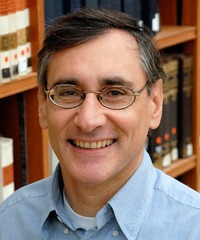
by Angelos Chaniotis
In the summer of 430 B.C.E., a ship from Egypt arrived in Piraeus with an uninvited guest onboard: the “plague.” The symptoms of this yet-to-be-identified disease—hypotheses range from typhoid fever to viral hemorrhagic fever—are described by the historian Thucydides, who was infected and survived. They included extreme headache, redness and inflammation of the eyes, bloody throats and tongues, repellent breath, sneezing, hoarseness and cough, pain in the stomach causing vomiting, reddish and livid bodies covered with pimples and welts, high fever, and thirst. The fever killed most patients within seven to nine days, others died later from weakness. Some patients are reported to have lost their sight, or even genitals, fingers, and toes. It is estimated that the disease killed more than 50,000 people. The doctors who attempted to treat it were its first casualty; the most prominent victim was none other than Pericles, the creator of the homonymous Golden Age of Athens.
Thucydides did not only describe the symptoms of the “plague” but also the impact that it had on society and the mentality of the populace: desperation and lack of resistance among the patients, who “were dying like sheep”; extreme confidence among those who survived, becoming immune and thinking that they would never die of any other sickness; neglect of religious rites; disrespectful disposal of corpses; great licentiousness, as people started living for the day. “Neither the fear of the gods nor laws of men awed any man—neither the former, because they concluded that it did not make any difference whether one worshipped or not, as they saw that all perished alike, nor the latter, because no man expected to live long enough to be tried and receive punishment for his crimes.”
Human societies have experienced many pandemics like the one we are experiencing today: there was the “Antonine plague” (165–180 C.E.) that spread through the Roman Empire by soldiers returning from campaigns in the Near East; the Plague of Justinian (541–542 C.E.) that decimated the population of Constantinople and ports of the Mediterranean; the Plague of Emmaus (or Amwas) that caused the death of some of Muhammad’s companions (639 C.E.); the Black Death of 1348–1350; the Spanish Influenza of 1918. On the other hand, responses to epidemics have never been the same, the globalized world of 2020 bears little resemblance to the last great pandemic a century ago.
“Does the flap of a butterfly’s wings in Brazil set off a tornado in Texas?” was the title suggested to Edward Lorenz, the mathematician and pioneer of chaos theory, for his talk at the 139th meeting of the American Association for the Advancement of Science in 1972. Half a century later, the question might be: “Can a bat soup in Wuhan kill 16,000 people in Italy?” Of course, the cause of the coronavirus has yet to be determined, but its rapid spread reminds us how closely connected everything has become. The immediate responses are as diverse as one would expect. While western cities register a lack of toilet paper, Russia registers a lack of condoms. While the U.S. President attempts to get exclusive access to medication and medical supplies, China delivers ventilators to New York, examination kits to Palestine, doctors and medical supplies to Italy, and protective masks to Greece. While American students throw coronavirus parties during spring break and pious Iranians lick and kiss shrines, the “Invisible Hands,” a group of young volunteers, deliver food to the elderly in New York. A hundred years from now, graduate students in History will have great opportunities to write Ph.D. theses on how the pandemic changed the world—provided that valuable sources (tweets, YouTube videos, blogs, etc.) will have survived the test of time.
Historians are poor prophets. Past experiences stimulate thought, but they do not predict the future. Although predictions are hazardous in a world that changes faster than any other in recorded history, two observations can be made: the first concerns the shortcomings of federalism in a time of crisis, the second the role of scientists. Most states or state-like formations with federal structures, or those with strong regional autonomy, have failed to react quickly and efficiently to the pandemic. Countries such as the Federal Republic of Germany and the United States, but also small states with federal structures, such as Belgium, were (and in part still are, while these lines are being written) implementing a patchwork of measures to fight the pandemic. The fact that the Governor of New York threatened to sue the neighboring state of Rhode Island over its policy to stop cars with New York license plates, that Arkansas has not implemented, as other states, the policy to close all non-essential business, that only 37 U.S. states have adopted the Medicaid extension,1 that, as of March 21, only 6 of the 16 German federal states (Bavaria, Saarland, Rhineland-Palatinate, Hamburg, Lower Saxony, and Hesse) had implemented a partial lockdown,2 and that, on March 10, the region of Brussels banned all indoor events with over 1,000 people, while the city of Antwerp, 53 km further north, refused to do the same,3 are just a few examples of the shocking lack of coordination and local shortsightedness. And there are many more can be added from the United States, Italy, and Spain. They reflect the naïve view that one community can isolate itself from the rest of the country, the continent, or the world, and follow a separate path in battling a problem that is not local.
One of the most visible—but hardly surprising—failures of a state-like entity to take coordinated action is that of the European Union. Admittedly, it is not a federal state, but it has shared borders within which “European citizens” can move freely; it has a Parliament; the members of the Euro-zone share the same currency and, for them, strict fiscal rules apply. Most of what made the European Union look like more than just an economic union has been suspended: border controls have been reintroduced within the area of the Schengen agreement; the EU budget rules concerning debt are on ice; the European Parliament is conspicuously absent. EU critics are quick to blame the Brussels bureaucracy for any shortcomings of the EU. But let us be clear about this: the current situation was caused by the refusal of most member-states to cooperate, along with the rise of national myopia. Will states with federal structures draw any lessons from this? Being a European citizen myself, and committed to the idea of a functioning European Union, I hope that the countries of the EU will; but hopes should be based on evidence, and I fail to see any.
The second observation concerns the sudden prominence of experts in public media. Whether this is the Koch Institute in Germany or Johns Hopkins University in the United States, Dr. Fauci in Washington or Professor Tsiodras in Athens, the German Council of Economic Experts, or the International Monetary Fund, there is an insatiable thirst for reliable information, especially considering the amount of pseudoscientific reports that flood social media. Whether one follows the advice of an expert or a short-sighted politician makes the difference between life and death. In the case of climate change this difference will be seen in decades, in the case of the coronavirus in days. The pandemic has given scientists and public intellectuals—health scientists, economists, sociologists, psychologists, historians, philosophers, lawyers—a forum of which they could only dream, and the possibility to claim for their fields the public influence that they deserve. It remains to be seen if they will continue occupying this forum when the crisis is over.
It also remains to be seen if the world will learn from this pandemic the most important lesson that concerns the future of the globalized world: there are no local solutions for global problems, whether we are dealing with a temporary pandemic, the endemic problem of world poverty and food shortage, or continually growing long-term challenges of climate change. Respecting and strengthening intergovernmental organizations, such the World Health Organization, the Food and Agriculture Organization, the UNESCO, and the other UN agencies, instead of undermining them, is a good place to start.
1. Kaiser Family Foundation: www.kff.org/health-costs/issue-brief/state-data-and-policy-actions-to-address-coronavirus (accessed on April 5, 2020).
2. Deutsche Welle, March 21, 2020: www.dw.com/en/germany-reports-few-violations-as-states-impose-coronavirus-lockdowns/a-52871927 (accessed on April 5, 2020).
3. Politico, March 12, 2020: www.politico.edu/article/coronavirus-belgium-division (accessed on April 5, 2020).
Angelos Chaniotis, Professor of Ancient History and Classics in the School of Historical Studies, specializes in Hellenistic history and uses epigraphic evidence as the source for social and religious history as well as the history of emotions, memory, and identity in the ancient world. He has addressed topics such as the role of inscriptions in the historical consciousness of ancient Greece, the importance of emotions in the cult practices of the eastern Roman Empire, and the cultural history of war in the Hellenistic period.

Covid-19: What We Know and What’s Next
Potential therapies for the novel coronavirus
with Arnold J. Levine
Arnold J. Levine is Professor Emeritus at the Institute for Advanced Study and leads the Institute’s Simons Center for Systems Biology in the School of Natural Sciences. An acclaimed leader in cancer research, he is also an expert on influenza and has advised the Canadian government and private industry on response to Covid-19. He spoke with Joanne Lipman, the Institute’s Peretsman Scully Distinguished Journalism Fellow, about the novel coronavirus outbreak, how it compares to previous pandemics, and potential therapies in the works that may help stop the spread. This interview was conducted on March 27, 2020. It has been edited for length and clarity.
Joanne Lipman: Your research spans a century of viral outbreaks, from the 1918 Spanish Flu pandemic to the present. From your perspective, how does Covid-19 compare to the 1918 Flu?
Arnold Levine: The 1918–1920 flu was the last influenza pandemic that really swept the world, and it was effectively lethal to 50 million people. The world population has grown ten-fold since 1918, so that 50 million today would be 500 million. But we are a lot more knowledgeable today with drugs, vaccine development, and information, so I hope we will never get to the scale of the 1918 flu pandemic.
JL: Is the new coronavirus similar to the 1918 influenza virus?
AL: The flu from 1918 really was a different virus completely than coronavirus. But these viruses do have in common that the pandemic strains of flu and the coronavirus both came from animals and both are respiratory viruses in humans. They do have in common that pneumonia plays an important role in the pathology.
The 1918 influenza, as all influenzas, was a bit of a smarter virus—if I could use the term—in that every year, the flu virus mutates a little bit. It has a very high mutation rate, a change in the nucleotides that make up the virus’ chromosomes. In that way flu escapes the immune system’s attempts to kill it.
Influenza viruses are unusual because we can become infected by a similar virus almost every year during our lifetime and occasionally there are worldwide pandemics that can cause many fatalities. Why does our usually excellent immune system fail us? How does this come about?
Arnold Levine explores these questions in a 2007 public lecture, "Tracking Influenza Virus Epidemics." Watch now.
Influenza has a really bad predilection of jumping from animals to humans. This also is true with coronavirus. Some viruses may live in an animal for many years, literally 100 years, and a whole generation or two of humans may have passed by without ever seeing that virus. In that case, there’s no immunity in the whole world’s population. But in the case of the 1918 influenza epidemic, the virus jumped from animals to humans just as the Covid-19 did. The 1918 flu came out of chickens or some birds. Covid-19 came out of bats.
With the 1918–1920 flu epidemic—we could figure this out because of work we did at the Institute—seven of the virus’s eight chromosomes were chicken chromosomes and one chromosome came from the human flu. That virus was completely new—except for one chromosome—in the human population.
To give you a further point of comparison, influenza was and is a seasonal virus, it comes in the winter. In the spring of 1918 when that pandemic began, it was pretty mild. The second year, winter, was pretty vicious.
JL: Is it possible that Covid-19 could also become worse next year?
AL: We don’t know if next year will be worse. It depends on the number of people infected. Remember, in New York, of the people they tested, about 1 in 1,000 have been infected. That’s not many. There could be lots of susceptible people next year. The estimate of the number of people infected, however, is very poor. We do not have enough testing and some people, unclear how many, have mild cases of Covid-19 infection and may well become immune.
JL: Covid-19 has been compared to two previous viral epidemics, SARS and MERS. Is it more lethal, or less?
AL: The SARS virus, which also is a coronavirus, is very closely related to Covid-19. Like Covid-19, the SARS virus jumped from bats into humans in China. SARS had a 9 percent mortality rate, pretty disastrous. As a point of comparison, present-day flu is 0.1 percent mortality. Covid-19 is somewhere between 1 percent to 2 or 3 percent. We haven’t got enough numbers yet. It’s hard to calculate those numbers at the beginning of epidemics.
But SARS had one thing that was very different from Covid-19. It only spread after people showed symptoms, when you coughed and you were very sick, when you literally went to the hospital. So, of the people who got infected with SARS and died, it was mostly the hospital workers and patients. It didn’t spread in the greater population. That’s the reason SARS stopped in a few years.
Now, in 2012, another coronavirus—MERS, the Middle Eastern Respiratory Syndrome—jumped from camels to humans. It had a horrendous mortality rate, 50 percent. It never got out of the Middle East. By 2014—just two years later—it stopped. It had such a high mortality rate that people were dying, and you don’t transmit after you’re dead. It requires active infection to transmit.
JL: Why did Covid-19 become a pandemic, when SARS and MERS did not?
AL: Covid-19 takes less virus to infect us, and it has a long latent period with no symptoms so it can spread in a population. Also, unlike flu, coronaviruses can combine with one another, inserting foreign genetic information into its chromosome and changing the properties of the virus. We learn all that at the molecular level, from sequencing the chromosome of the Covid-19 first done in China, and testing its attachment to lung cells in a petri dish.
The other thing is, Covid-19 seems to have affected people in very different ways. One person can have the virus and not have many symptoms at all. Another person gets sick and dies.
The good news is that Covid-19 doesn’t mutate very much. It only has a single chromosome. So, there are fewer combinations, and no segregation of chromosomes.
What’s bad is, it settles in the lungs as pneumonia. The immune system attacks the virus-infected cells and kills your lung cells, the epithelial cells of the lining of the tubes to the lungs, and the lungs themselves. Then the lungs fill up with fluids, and that’s a pneumonia. Your oxygen intake is compromised, and eventually one could die from that.
So, this virus has been successful in becoming a pandemic because it spreads very efficiently and small amounts of virus can start an infection. That was not true of epidemic flu, SARS or MERS.
JL: You met with the Canadian government as part of a group of multidisciplinary scientists that identified three potential Covid-19 therapies. Can you share the three therapies with us?
AL: First, I learned at that meeting that there are eight vaccines in various stages of development. Some were actually in clinical trials. So, there’s a very big effort on vaccines going on right now by eight or ten different groups.
Second, there’s a big effort looking for chemicals that inhibit the virus. One of the genes of Covid-19 is an enzyme called a protease. When the gene was sequenced, it looked a bit like a human immunodeficiency virus protease gene—the HIV gene, that causes AIDS—for which we have a drug. So, that drug has been tried. And it does inhibit the coronavirus enzyme, but not as well as you’d like. So, better inhibitors are being made right now. Maybe there could be a pill that would stop the virus from replicating and stop the pathology.
The third potential therapy comes from an observation made in cancer treatment. There are certain cancer therapies that target a tumor, without killing healthy cells and that therapy may be able to be repurposed for Covid-19.
So, some existing approved cancer drugs are being repurposed. Now there’s a clinical trial going on in New York State, of 750 patients, with antibodies that we use for preventing autoimmunity in cancer therapy. It might be repurposed for Covid-19. I actually have high hopes for that one.
So to summarize, there are three approaches in therapy here that are important. First is vaccines. Second, there are these drugs that inhibit the virus. Then the third is an existing cancer therapy/drug that may be repurposed.
JL: One of the major roadblocks in the U.S. has been testing—both lack of availability, and length of time it takes to get results. Will we see improvements in both going forward?
AL: There are two ways to test for this virus. One way is to test for the virus directly. But there’s a better way, actually, to test the population at large, the whole population. That is not to look for the virus, but to look for antibodies. If you have been exposed to the virus and it replicates you make antibodies against it. We can test for that. You could prick your finger and get a drop of blood.
JL: Why are we not doing that now?
AL: Abbott just developed a home test that the FDA has just approved, for testing your blood.
JL: Can I get that test yet?
AL: No, they just got approval, and cleared the test for use in doctors’ offices and clinics.
JL: Looking ahead, how long will the current pandemic last?
AL: I think we’ll be intellectually and physically in better shape next year. We’ll see. The biggest problem is a lot of unknowns here. We don’t know anything really deeply about this virus.
But the good news is that it should not last forever. We need to be prepared however. There will always be a “next” virus.
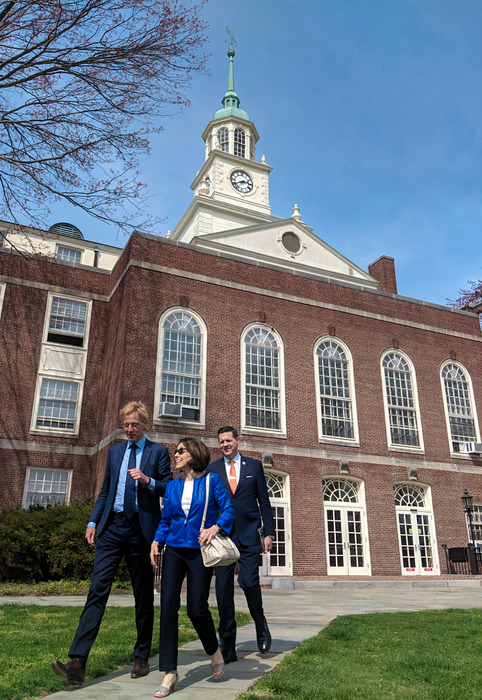
A Launchpad to Discovery
The IAS–NSF partnership and seventy years of groundbreaking research, global collaboration, and career advancement
The future of knowledge relies on the cultivation of aspiring scholars and scientists from around the world,” says Robbert Dijkgraaf, IAS Director and Leon Levy Professor. “The partnership between IAS and NSF is a primary engine of discovery that continues to empower scholars by providing the space, time, and resources needed to take intellectual risks, advance professionally, and illuminate the unknown.”
After its founding in 1950, the National Science Foundation (NSF) quickly became an indispensable champion of scientific progress. At this time, the Institute for Advanced Study—established in 1930, with Abraham Flexner as founding Director—was already a global hub for curiosity-driven basic research. A natural alliance was immediately forged, and the results have proved to be astounding.
Some of the most remarkable breakthroughs of the twenty-first century took place on the watch of Dr. France Córdova, who was sworn in as NSF Director in April 2014. These achievements include the first detection of gravitational waves and the first picture of a black hole, based on ideas first conceived of by Albert Einstein, a founding member of the IAS Faculty.
Similar instances of collaboration, shared ideas, and breakthroughs over the years underscore the extraordinary value of the IAS–NSF partnership. William A. Blanpied, a past NSF fellow, penned an essay in 1999, in which he shares the stories of numerous NSF fellows from the inaugural class of 1952. Among these is that of Robert L. Mills, who would later go on to work with C.N. Yang as a Member at the Institute for Advanced Study, completing work that changed the course of particle physics.
Another fellow featured in the essay was Allen Devinatz, who retired as an emeritus professor of mathematics at Northwestern University. Devinatz recalled in 1999, “I went to the Institute [for Advanced Study] where I found the atmosphere both relaxed and friendly. I met some of the leading mathematicians of the century.... Thus the awarding of an NSF post-doc in 1952 had a positive influence on my life and career. It changed my thinking by realizing that most of the mathematicians whom I had come in contact with were decent people, and that there was a place for me in the academic mathematical community.” As the NSF celebrates its 70th anniversary, the IAS is proud to share #NSFStories from the next generation that attest to and uphold this great tradition of discovery.

Jelani Nelson is currently a professor of computer science at the University of California, Berkley. A former IAS Visitor (2011–12) and Member (2012–13) in the School of Mathematics, Nelson recalled, “The sense of community felt much stronger than any other academic institution I’ve spent time at.” While at the Institute, Nelson’s work focused on crafting tools to efficiently analyze massive data sets related to internet activity. “Data is streaming by—such as queries to a search engine or purchases from an online vendor—and one wants to process this data as it streams by using very little memory while still being able to answer nontrivial queries about the data stream,” Nelson explained. The Institute proved a fertile environment for collaboration on this subject. Working with the late mathematician and IAS Professor Jean Bourgain and Sjoerd Dirksen, Nelson conducted a project on dimensionality reduction that resulted in a paper published in the Symposium on the Theory of Computing 2015 and in Geometric and Functional Analysis later that same year. Additionally, Nelson’s collaboration with Huy Nguyen, a graduate student at Princeton University, resulted in four separate publications on streaming algorithms and dimensionality reduction. The two now have a joint grant together and have published two more papers.

Richard Schwartz is currently the Chancellor’s Professor of Mathematics at Brown University, specializing in geometry, topology, and dynamics. While on a sabbatical from the University of Maryland, Schwartz was a resident Member at IAS (2003–04). “At the time I was at IAS, I was thinking quite a bit about the pattern light makes when it bounces around three mirrors that have been placed in a certain 4-dimentional curved universe called the complex hyperbolic plane,” recalled Schwartz. “I loved the freedom and time to think … being at IAS made me very happy, and that made me work well.” Not only was this a very productive period for Schwartz—which included proving his spherical CR surgery theorem—but it was also an opportunity to explore new areas of research. “I was able to accomplish a lot of what I set out to do, I then was able to switch gears and a make a big change in my research. Shortly after leaving IAS I started working on more dynamical things like inner and outer billiards,” Schwartz added. Schwartz returns to IAS in 2020 as a Member, seventeen years following his first term.
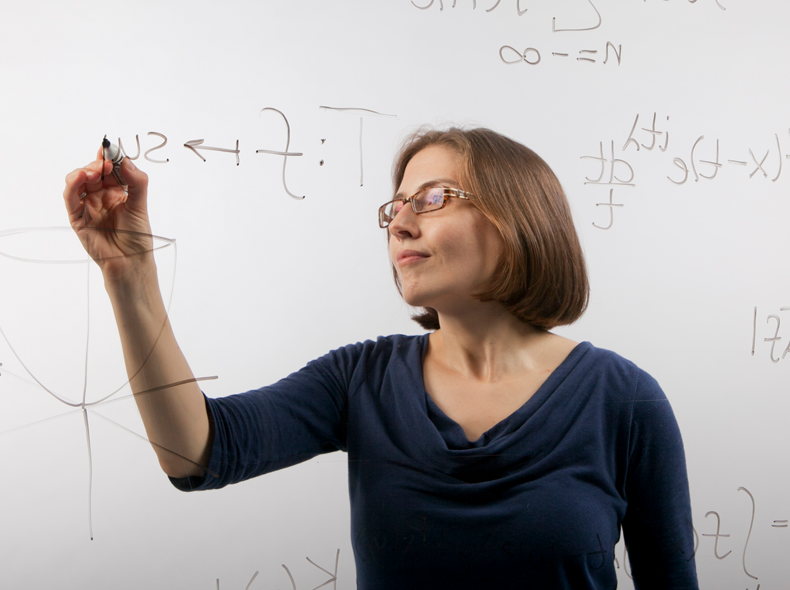
Lillian B. Pierce, whose research interests center around number theory and harmonic analysis, is currently the Nicholas J. and Theresa M. Leonardy Associate Professor at Duke University. Pierce was a Member (2009–10) and later received a von Neumann Fellowship (2017–18) for mid-career scholars at the IAS. “The first time I spent a year at the IAS, I had just finished my Ph.D., and I received an NSF postdoc to work at the IAS,” Pierce explained. “That year I talked a lot with Peter Sarnak, and one particular question he asked me has unexpectedly developed into one of the major arcs of my last ten years of research. I wasn’t able to answer the question at the time, but I carried it with me, and eventually it led to several new papers. It was one of those questions that opens a whole new way of thinking about a tough problem, and I feel so lucky that I had an office just down the hall from Peter Sarnak, and so he called me in to talk about it.” Pierce’s experience underscores the long-term impact of studying at IAS, not only in terms of informing one’s own research, but also in the dissemination of knowledge to institutions around the world. “I always look forward to a chance to stop by the IAS and check in with Peter Sarnak, to tell him of any progress, and to hear new stimulating feedback. This is one of the most important mentoring relationships I have ever had, and I think it all crystallized because of my NSF postdoc at the IAS.”
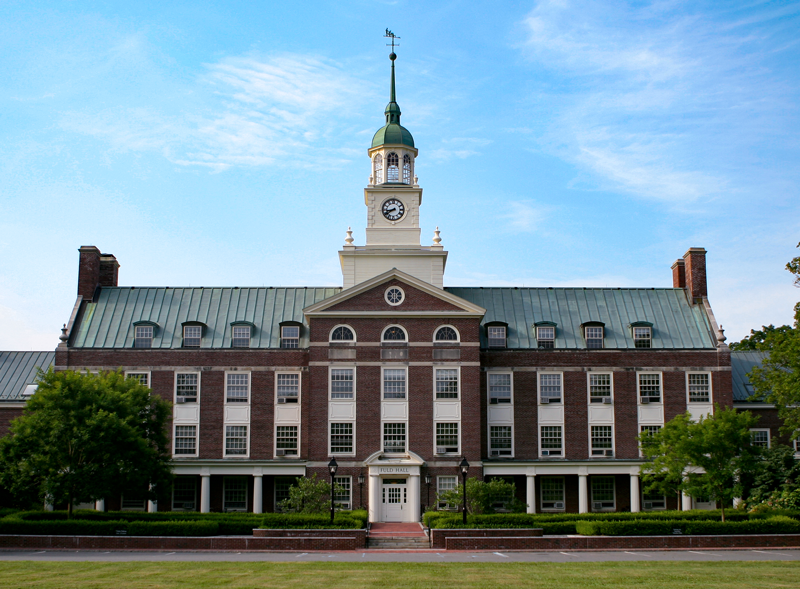
News of the Institute Community
Age of Conquests: The Greek World from Alexander to Hadrian (Harvard University Press, 2018), by Angelos Chaniotis, Professor in the School of Historical Studies, has been published in German under the title Die Öffnung der Welt (WBG/Theiss Verlag, 2019). Additionally, Chaniotis has been elected a member of the Greek Council of Higher Education.
Camillo De Lellis, IBM von Neumann Professor in the School of Mathematics, has been named a recipient of the 2020 Bôcher Memorial Prize, presented by the American Mathematical Society.
Didier Fassin, James D. Wolfensohn Professor in the School of Social Science, has edited Deepening Divides: How Territorial Borders and Social Boundaries Delineate Our World (Pluto Press, 2019) and authored Mort d’un voyageur. Une contre-enquête (Seuil, 2020). Additionally, Fassin has been awarded the title of Doctor honoris causa by the University of Liège.
Jacob Lurie, Professor in the School of Mathematics; Lai-Sang Young, current Distinguished Visiting Professor; and ten former IAS scholars have been elected to the National Academy of Sciences.
Helmut Hofer, Hermann Weyl Professor in the School of Mathematics, Alondra Nelson, Harold F. Linder Professor in the School of Social Science, and James M. Stone, Professor in the School of Natural Sciences, have been elected to the American Academy of Arts and Sciences. Also among the newly elected AAAS members are IAS Trustee Jeanette Lerman-Neubauer and twelve former IAS scholars.
Alondra Nelson, Harold F. Linder Professor in the School of Social Science, has been elected to the board of trustees of the Andrew W. Mellon Foundation. Additionally, Nelson has been selected to serve on the National Academy of Medicine’s newly established Committee on Emerging Science, Technology, and Innovation in health and medicine. Nelson has also been elected a member of the American Philosophical Society, along with Ewine Fleur van Dishoeck, IAS Trustee and Visitor (1984–88), and four former IAS scholars.
Sabine Schmidtke, Professor in the School of Historical Studies, has been awarded a Humboldt Research Award for her academic achievements from the Alexander von Humboldt Foundation.
Schmidt Futures has awarded a $1 million grant to further a project led by James M. Stone, Professor in the School of Natural Sciences, to use high-performance computing to understand challenging astrophysical problems.
Scott Tremaine, Richard Black Professor in the School of Natural Sciences, has been awarded the 2020 Henry Norris Russell Lectureship from the American Astronomical Society. Additionally, Tremaine and James M. Stone, Professor in the School of Natural Sciences, have been named Fellows of the American Astronomical Society.
Francesca Trivellato, Professor in the School of Historical Studies, has coedited, with Julia Ott, Member in School of Social Science, Carolyn Biltoft, and Marc Flandreau, the new academic journal Capitalism: A Journal of History and Economics.
Avi Wigderson, Herbert H. Maass Professor in the School of Mathematics, has authored Mathematics and Computation: A Theory Revolutionizing Technology and Science (Princeton University Press, 2019).
Edward Witten, Charles Simonyi Professor in the School of Natural Sciences, has been elected a Fellow of the American Association for the Advancement of Science. Other elected scholars include Shirley M. Tilghman, IAS Trustee, and seven former IAS scholars.
The Royal Swedish Academy of Sciences and the Crafoord Foundation have awarded Enrico Bombieri, Professor Emeritus in the School of Mathematics, the 2020 Crafoord Prize in Mathematics.
Phillip Griffiths, Professor Emeritus in the School of Mathematics, has been elected a Foreign Member of the Russian Academy of Sciences.
Jonathan Israel, Professor Emeritus in the School of Historical Studies, has authored The Enlightenment that Failed: Ideas, Revolution, and Democratic Defeat, 1748–1830 (Oxford University Press, 2020).
Aaron Michael Butts, Member in the School of Historical Studies, has been awarded a Humboldt Research Fellowship for Experienced Researchers from the Alexander von Humboldt Foundation.
Eben Kirksey, Member in the School of Social Science, has been awarded an ARC Discovery Project grant from the Australian Research Council.
Islands of Heritage: Conservation and Transformation in Yemen (Stanford University Press, 2018), by Nathalie M. Peutz, Member in the School of Social Science, has been awarded the Middle East Section Book Award by the Middle East Section of the American Anthropological Association.
The Iranian Expanse: Transforming Royal Identity through Architecture, Landscape, and the Built Environment, 550 B.C.E.–642 C.E. (University of California Press, 2018) by Matthew P. Canepa, Member (2016) in the School of Historical Studies, has been awarded the 2020 James R. Wiseman Book Award by the Archaeological Institute of America.
Maribel Fierro, Member (1994–95) and Visitor (2015) in the School of Historical Studies, has been recognized with the Middle East Medievalists Lifetime Achievement Award.
Arts of Allusion: Object, Ornament, and Architecture in Medieval Islam (Oxford University Press, 2018) by Margaret Graves, Member (2015–16) in the School of Historical Studies, has been awarded the 2019 ICMA Annual Book Prize by the International Center of Medieval Art.
The 2020 Abel Prize is jointly awarded to Gregory Margulis, Member (1991, 2006) in the School of Mathematics, and Hillel Furstenberg by the Norwegian Academy of Science and Letters.
Hirosi Ooguri, Visiting Professor (2015) and Member (1988–89) in the School of Natural Sciences, has been awarded a Medal of Honor with Purple Ribbon, conferred by Japan’s Emperor Naruhito.
Roberto Tottoli, Member (2016–17) and Visitor (2019) in the School of Historical Studies, has been named a fellow of the Accademia Nazionale dei Lincei.
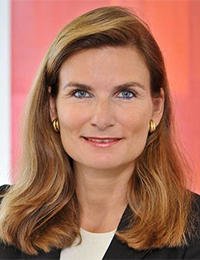 A. Eckert / TUM
A. Eckert / TUM
Ann-Kristin Achleitner Appointed to Board of Trustees
The Institute appointed economist Ann-Kristin Achleitner to its Board of Trustees on October 26, 2019. Achleitner is a Professor of Entrepreneurial Finance in the School of Management at the Technical University of Munich. A leading expert in financing innovation, venture capital, private equity, and family businesses, with additional work in the financing of social enterprise, Achleitner brings to the IAS Board a strong commitment to academia and the advancement of enterprising ideas.
Achleitner is widely recognized as an international thought leader. She has served as a policy advisor to the European Union and to the German and Bavarian governments, and is a former member of the government commission responsible for overseeing and shaping the German Corporate Governance Code. Her diverse experience and perspective will ensure that the Institute’s mission continues to resonate at a global scale.
Achleitner currently serves on the Munich Re Supervisory Board, the Linde board of directors, and the Investcorp International advisory board. She also holds doctorates in Law and Business Administration from the University of St. Gallen and an honorary doctorate from Leuphana University Lüneburg.

SRG X-Ray Observatory Surveys Half the Sky
X-ray signatures of the universe
Occupying a region of space (L2) four times more distant than the moon, the SRG observatory is busily rendering an X-ray map of the universe and has officially reached the half-way mark of its first all-sky survey, which began in December and is expected to be completed by June 2020. Rashid Sunyaev, Maureen and John Hendricks Distinguished Visiting Professor in the School of Natural Sciences, is the Russian Scientific Head of the Spectrum-Roentgen-Gamma (SRG) mission.
Over the next four years, the SRG observatory, equipped with two independent X-ray telescopes—German-built eRosita and Russian ART-XC—will produce eight all-sky surveys, increasing the sensitivity of current X-ray maps by 20 to 30 times.
The X-ray signature of the universe provides insight into some of the most energetic regions of space, from the most powerful star-forming region in our galaxy, known as Cygnus X, to active galactic nuclei and quasars set ablaze by supermassive blackholes billions of light years away.
“Have you seen your body in X-rays? It looks completely different,” said Sunyaev, speaking with Nature shortly before the observatory launch on July 13, 2019. “We will do the same with the universe.”
More than 125,000 X-ray sources, including thousands of clusters of galaxies filled mainly with mysterious dark matter, have already been detected on the quarter of the sky that the Russian consortium is responsible for processing and analyzing.
The X-ray map also reveals many thousands of stars with active coronae (much more luminous in X-rays than the sun’s corona), remnants of supernova explosions, pulsars, accreting white dwarfs, and many other types of galactic X-ray sources
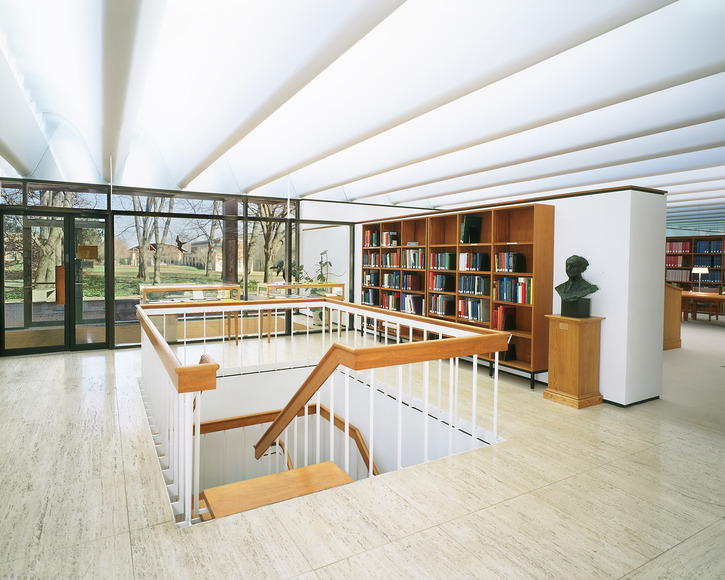
NEH Challenge Grant Awarded for HS–SS Library Structural Improvement Project
A uniquely serene and supportive environment at the heart of humanities studies at IAS
The National Endowment for the Humanities (NEH) has announced a $750,000 matching grant for the Institute’s Historical Studies–Social Science Library that will be dedicated to infrastructure improvements of the library, which represents the heart of humanities studies at IAS.
“The Historical Studies–Social Science Library is central to scholarship in the humanities at the Institute in part because it houses exceptional research and reference materials, rare books, and archival collections,” wrote Robbert Dijkgraaf, IAS Director and Leon Levy Professor, and Charles Simonyi, Chair of the IAS Board of Trustees, in a joint letter expressing support for the grant.
The library contains more than 125,000 volumes and has subscriptions to approximately 1,000 journals. The collection’s strengths are reflected by its holdings related to classical studies, ancient history, and archaeology. The library hosts more than 40 events per year within its space, from informal colloquia and book talks to conferences uniting scholars from the IAS, international peers, and members of the public.
“Over the past 55 years, the facility has also provided a uniquely serene and supportive environment for thousands of scholars to read, write, think, and collaborate,” Dijkgraaf and Simonyi added. “This is perhaps the purest form of fulfillment of the IAS mission, and there is no question that the building’s chronic structural problems must be solved in a manner that preserves the unparalleled quality of the space as well as the library’s holdings.”
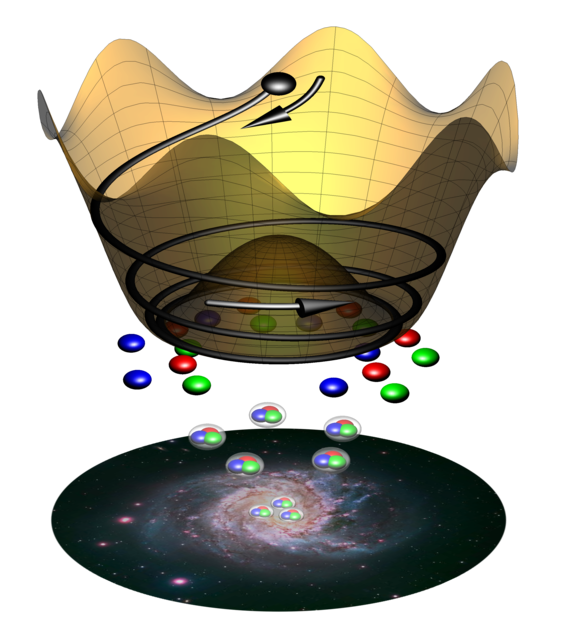
Paper Sheds Light on Infant Universe and Origin of Matter
Filling three missing pieces of the physics jigsaw puzzle simultaneously
A new study, conducted to better understand the origin of the universe, has provided insight into some of the most enduring questions in fundamental physics: How can the Standard Model of particle physics be extended to explain the cosmological excess of matter over antimatter? What is dark matter? And what is the theoretical origin of an unexpected but observed symmetry in the force that binds protons and neutrons together?
In the paper “Axiogenesis,” published in Physical Review Letters on March 17, 2020, researchers Keisuke Harigaya, Member in the School of Natural Sciences at the Institute for Advanced Study, and Raymond T. Co of the University of Michigan, have presented a compelling case in which the quantum chromodynamics (QCD) axion, first theorized in 1977, provides several important answers to these questions.
“We revealed that the rotation of the QCD axion can account for the excess of matter found in the universe,” stated Harigaya. “We named this mechanism axiogenesis.”
Infinitesimally light, the QCD axion—at least one billion times lighter than a proton—is nearly ghost-like. Millions of these particles pass through ordinary matter every second without notice. However, the subatomic level interaction of the QCD axion can still leave detectable signals in experiments with unprecedented sensitivities. While the QCD axion has never been directly detected, this study provides added fuel for experimentalists to hunt down the elusive particle.
“The versatility of the QCD axion in solving the mysteries of fundamental physics is truly amazing,” stated Co. “We are thrilled about the unexplored theoretical possibilities that this new aspect of the QCD axion can bring. More importantly, experiments may soon tell us whether the mysteries of nature truly hint towards the QCD axion.”
Harigaya and Co have reasoned that the QCD axion is capable of filling three missing pieces of the physics jigsaw puzzle simultaneously. First, the QCD axion was originally proposed to explain the so-called strong CP problem—why the strong force, which binds protons and neutrons together, unexpectedly preserves a symmetry called the Charge Parity (CP) symmetry. The CP symmetry is inferred from the observation that a neutron does not react with an electric field despite its charged constituents. Second, the QCD axion was found to be a good candidate for dark matter, offering what could be a major breakthrough in understanding the composition of approximately 80 percent of the universe’s mass that has never been directly observed. In their work on the early universe, Harigaya and Co have determined that the QCD axion can also explain the matter-antimatter asymmetry problem.
As matter and antimatter particles interact, they are mutually annihilated. In the first fraction of a second following the Big Bang, matter and antimatter existed in equal amounts. This symmetry prevented the predominance of one type of matter over the other. Today, the universe is filled with matter, indicating that this symmetry must have been broken. Harigaya and Co cite the QCD axion as the culprit. Kinetic energy, resulting from the motion of the QCD axion, produced additional baryons or ordinary matter. This slight tipping of the scale in favor of matter would have had a pronounced cascade effect, paving the way for the universe as it is known today.
Greater understanding of the newly discovered dynamics of the QCD axion could potentially change the expansion history of the universe and thus inform the study of gravitational waves. Future work on this topic could also provide further insight into other enduring questions of fundamental physics, such as the origin of the tiny neutrino mass.
“Since theoretical and experimental particle physicists, astrophysicists, and cosmologists began studying the QCD axion, great progress has been made. We hope that our work further advances these interdisciplinary research efforts,” added Harigaya.
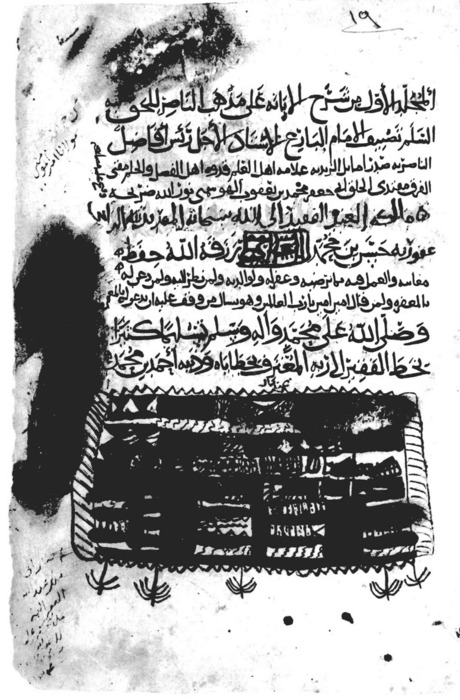
Persian Heritage Foundation Grant to Study Zaydism in Iran
Filling in the gaps in our understanding of key figures and their works
The Institute in conjunction with the Persian Heritage Foundation (PHF) announced the award of a PHF grant to support the study of Zaydism in Iran—part of a major research project spearheaded by Sabine Schmidtke, Professor in the School of Historical Studies.
Over the years, Schmidtke’s research has unearthed a rich collection of Zaydi doctrinal thought and legal history that had previously been neglected. While Zaydi Shiism is commonly associated with the highlands of Yemen, next to nothing is known about the Zaydi community in Northern Iran between the ninth and the sixteenth century.
“It is my hope,” says Schmidtke, “that our work will help to develop a new field of study and to inspire a new generation of scholars to work on this material.”
From the ninth through the late twelfth century, the leading intellectual centers of Zaydism were located in Northern Iran. Gradually, the Zaydi communities in Iran experienced a decline and most of their literary legacy was no longer transmitted. Had it not been for the massive transfer of Zaydi religious literature from Iran to Yemen following the political unification of the Caspian and Yemeni Zaydis that began by the end of the eleventh century, most of the Iranian Zaydi literary heritage would have been lost. However, the tradition of Zaydi learning continued in Iran at least until the sixteenth century, as is confirmed by scattered documents attesting the scholarly tradition of Zaydism.
“The Persian Heritage Foundation supports research initiatives to advance our understanding of new and understudied fields of inquiry relating to all aspects of the Persian heritage and its history,” stated Rudi Matthee, President of PHF and Member (2017) at IAS. “We are pleased to support this important initiative, confident that the result of the research will substantially increase our knowledge of the little-known Zaydi tradition of Northern Iran and its subsequent transmission to Yemen.”
The generous grant will be used to fill in the gaps in understanding of this history, focusing on key figures and their works among the Iranian Zaydis. Most importantly, it will help to finalize a monograph which is currently being prepared by long-term Member Hassan Ansari and Sabine Schmidtke: “Studies in Iranian Zaydism: An Intellectual History from the 11th to the 16th Century,” accepted for publication by Edinburgh University Press (forthcoming in 2021). In this book some of the key figures of Iranian Zaydism between the eleventh and thirteenth centuries and their literary productions will be analyzed, including the eleventh-century Imam al-Muwaffaq bi-llāh and his son al-Murshad bi-llāh, as well as the two twelfth-century scholars, Abū l-ʿAbbās Aḥmad b. Muḥammad al-Sammān, author of a comprehensive exegesis of the Qurʾān, and ʿAlī b. al-Ḥusayn Siyāh Sarbījān, the author of the influential K. al-Muḥīṭ fī l-imāma, a comprehensive account of Zaydi political theory. In addition, some of the remnants of Zaydi scholarship in Iran beyond the thirteenth century will be discussed, including scholarly contacts between Yemenis and Iranians during the nineteenth and twentieth centuries.
Sabine Schmidtke was appointed Professor of Islamic Intellectual History in the School of Historical Studies in 2014 and was previously a Member of the School in 2008–09 and 2013–14. Her pioneering research has transformed perspectives on the interrelations and connections among different strands of intellectual inquiry, across time, place, religions, and philosophical schools.
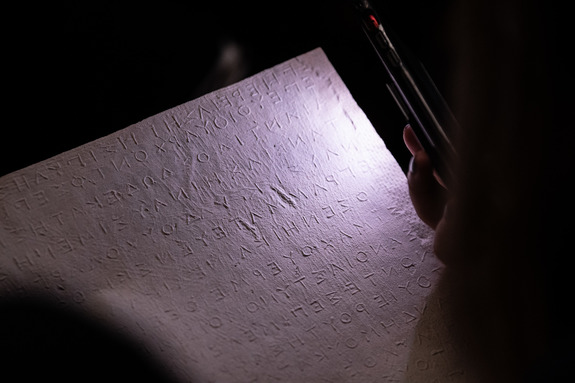
NEH Grant for Squeeze Digitization Project
Opening access to imprints of inscriptions crucial to understanding the ancient world
The National Endowment for the Humanities (NEH) has awarded the Institute a three-year grant of $350,000 to complete digitization of one of the world’s largest squeeze collections. The project will establish worldwide open access for more than 30,000 paper squeezes—the physical imprints of stone inscriptions—that are crucial to an understanding of the ancient world.
“The immense epigraphic resources of the Institute have played a major role in advancing our understanding of the ancient Greek world,” stated Aaron Hershkowitz, Project Coordinator. “With the support of the NEH we will be able to invite the entire world into our collection, and we eagerly look forward to new eyes making fresh discoveries.”
The Project Director, Angelos Chaniotis, Professor of Ancient History and Classics in the School of Historical Studies, stated, “This grant enables the Institute to provide free access to its epigraphic resources to researchers and students of Classics, Archaeology, and History worldwide.”
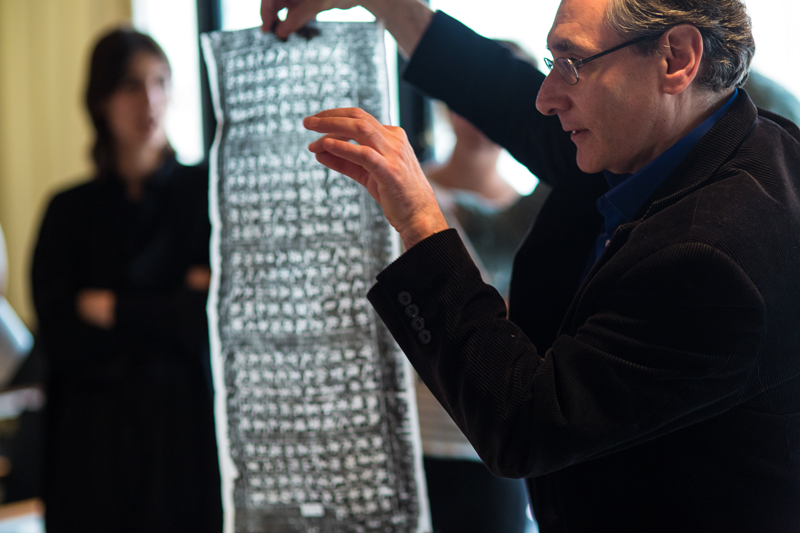
Sometimes the only surviving records of stone inscriptions that are now lost or destroyed exist in the form of squeezes. These three-dimensional, mirror-image impressions provide uniquely detailed and accurate records of the text, images, and geometry of inscribed stones, capturing and preserving a wealth of historical information.
The IAS collection is one of the largest in the world. It contains approximately 30,000 squeezes of Greek and Latin inscriptions that cover every aspect of political, social, economic, religious, legal, and cultural life in the broader Greek world from ca. 400 B.C.E. to ca. 400 C.E.
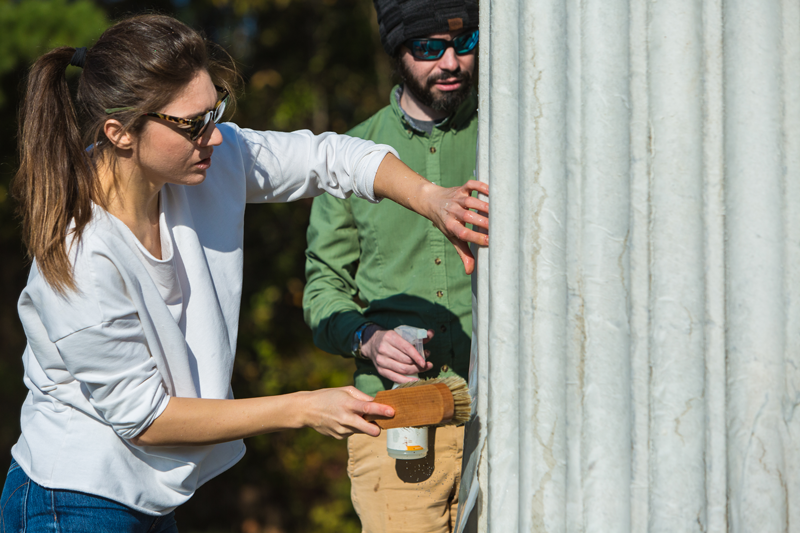
The size and content of the IAS collection are well known among scholars of the ancient world, but until the recent launch of the IAS’s squeeze digitization project, the squeezes could only be viewed in person. The publication of the collection will allow a far broader range of users to test their questions and theories against the data contained in the collection. The IAS has partnered with institutions and communities around the world to share information, ensure transparency across epigraphical databases, and broadly disseminate new material.
The study of inscriptions has been a primary focus of historians at the IAS since the time of epigrapher Benjamin Dean Meritt, who started building a repository of squeezes immediately after his appointment to the Faculty in 1935.
